Illustrations from the 1930s Chinese magazine Modern Sketch
![]()
Modern Sketch issue #9
Chen Juanyin, “China’s Characters Who Count” (#1, Chiang Kai-shek...)
For the full background on this remarkable publication read John A Crespi's essay "China's Modern Sketch: The Golden Era of Cartoon Art, 1934-1937" at MIT Visualizing Cultures. Every issue can be seen in high resolution at Colgate Digital Collections -- they made the scans.
From MIT Visualizing Cultures: Modern Sketch stands out among the nearly 20 illustrated humor and satire magazines that proliferated in mid-1930s Shanghai. One can point to the remarkable openness and eclecticism of its content, and its inclusion of work by young artists who went on to become leaders in China’s 20th-century cultural establishment. Most intriguing, however, is the kaleidoscopic window onto the past that Modern Sketch provides. Without doubt the illustrations populating its pages lend blunt visual force to the major crises and contradictions that define China’s 20th century as a quintessentially modern era.
I included artist's names and translations when possible.
![]()
Hu Kao, “Swimsuits of 1934” (issue 7, July 1934)Crespi: "Designed to define Modern Sketch in the eyes of readers, the magazine’s full-color front covers offer a convenient point of entry into its diverse subjects and styles. What strikes the viewer’s eye now, as it surely did in the 1930s, is a consistent theme of eroticism. Nude or semi-nude figures were undoubtedly displayed to titillate the potential buyer. Yet during the first decades of the Republican period nudity could also project positive symbolic values, such as freedom, liberation, and physical health—all tropes aimed at counteracting representations of China as the tradition-bound, feeble, 'Sick Man of Asia.'"
![]()
![]()
Sheng Gongmu (Te Wei), “The Borderlands”Crespi: "Many streams of artistic influence fed the imagery of Modern Sketch. Where representations of the 'modern girl' and 'modern boy' drew mainly from stylish American jazz-age magazine illustration, other cartoonists picked and chose from among modern-art movements like cubism, surrealism, fauvism, and dada. Few rules applied to the young, almost totally uninstitutionalized art of Chinese cartooning, and the results could be fascinatingly grotesque."
![]()
Ye Qianyu, “Supply Exceeds Demand, Demand Exceeds Supply”
Some of these can be viewed larger by clicking:
Fullscreen
![]()
Yan Zhexi, “Nothing of the Sort!”
![]()
![]()
Weng Xingqing, “A World of Lines”
![]()
Shang Ban Yu, “Bacteria from the ‘Sick Man of Asia’ at 2000x Magnification”
![]()
“Lineup of the World’s Dictators: Saint Fascista and His Disciples”Crespi: "...Modern Sketch did much more than react to big national and global events. Due to the vision of its editor, Lu Shaofei, the collective pictorial imagination of Modern Sketch probed all corners of the modern era, beyond and below the big stories of politics, economics, Shanghai, and even China."
![]()
Hu Kao, “The Perfect Life of Leisure!” (clockwise from top left)
— Ain’t no time for learning in the gusty old fall,
Woo woo...chee chee...a shoo shoo shoo...
— Ain’t no time for books in the warm and breezy spring,
Pa pa...doo doo...a go go go
— Ain’t no time for homework in the scorching summer,
Wah wah...lah lah...a yeah yeah yeah
— Ain’t no time to study on those chilly winter nights,
Dah dah...bom bom...a lah lah lah...
![]()
Huang Weiqiang, “The Internationalized Hong Kong Meat Market”
![]()
Chinese opera character drawn by a child (Chen Keyan) for this 1935 cover
![]()
cover by Huang Yao featuring his signature character
![]()
![]()
![]()
Crespi: "Zhang Guangyu’s cheerful January 1935 contribution commemorated the Republican government’s Year of Children..."
![]()
Pang Xunqin, “Aquatic Life”
![]()
![]()
![]()
![]()
"World Peace News Service: 'Portrait of the Chief of the Economic Survey Team,
Kodama Kenji, during His Visit to China'”
![]()
![]()
Chen Paixi, “Official Malfeasance among the Cantonese Gentry”
![]()
“Compassion for the World”
[The Pope:] The Lord Shall Provide
![]()
Ye Qianyu, “The Second-class Rail Carriage”
Many of the illustrations have a strong Grosz influence
![]()
Ye Qianyu, cover of the second issue
![]()
Yu Yongpeng, “Competing Vehicles”
![]()
Yu Yongpeng, “Repairing a Rich Man’s Head”
Instructions: The face is painted green to facilitate malingering. The scalp is lubricated to slip out of tight situations. The eyes are different colors for sizing up different sorts of characters. The ears are nailed shut to help shirk responsibility. The teeth are sharp and the tongue coated with honey as an aid to persuasion. But little does the rich man know how the small-timers leech off of him!
![]()
Cover of the first issueCrespi: "Equal parts comic and gallant, this strange horseman heralded the arrival of the longest running and most influential humor and satire magazine in China during the first half of the 20th century: Shidai manhua, or by its English name, Modern Sketch. Published monthly for 39 issues from 1934 through June 1937, Modern Sketch was recognized then, and still is now, as the centerpiece of China’s golden era of cartoon art."
A sequel to this post is in the works.
See all posts tagged "China"
![]() The Painter at His Easel
Thus many a painter once gay and glad,
Sits before his picture, and says full sad:
“Oh had I but turn’d this work in to cash!”
“But nobody buys since the last great smash!”
Franz Pocci (1807–1876) was Bavarian court official but also a puppeteer, Marionette theater director, illustrator, poet, and playwright. Viola Tricolor's proto-Surrealist anthropomorphic pansies appear to be his best-remembered work. Read more about Pocci at wikipedia and see this website for more of his illustration work.
I have in my hands a little 1977 reprint which is apparently already out of my price range. The original was printed using chromolithography and surely looks incredible. I'm not sure where I first read about the book; maybe Princeton's Graphic Arts blog.
Also see: Mimpish Squinnies and the rest of the Kinderbuch series
The Painter at His Easel
Thus many a painter once gay and glad,
Sits before his picture, and says full sad:
“Oh had I but turn’d this work in to cash!”
“But nobody buys since the last great smash!”
Franz Pocci (1807–1876) was Bavarian court official but also a puppeteer, Marionette theater director, illustrator, poet, and playwright. Viola Tricolor's proto-Surrealist anthropomorphic pansies appear to be his best-remembered work. Read more about Pocci at wikipedia and see this website for more of his illustration work.
I have in my hands a little 1977 reprint which is apparently already out of my price range. The original was printed using chromolithography and surely looks incredible. I'm not sure where I first read about the book; maybe Princeton's Graphic Arts blog.
Also see: Mimpish Squinnies and the rest of the Kinderbuch series
![]()
![]()
![]() Faculty Professors
Here stand the University chaps,
In their grand official gowns and caps;
And thinks full sure, each learned elf:
“The cleverest here? - ‘tis I myself!”
Faculty Professors
Here stand the University chaps,
In their grand official gowns and caps;
And thinks full sure, each learned elf:
“The cleverest here? - ‘tis I myself!”
![]()
![]()
![]()
![]() See the full "Kinderbuch series" of German, Austrian, and Swiss children's books
See all children's books on 50 Watts
See the full "Kinderbuch series" of German, Austrian, and Swiss children's books
See all children's books on 50 Watts
 The Painter at His Easel
Thus many a painter once gay and glad,
Sits before his picture, and says full sad:
“Oh had I but turn’d this work in to cash!”
“But nobody buys since the last great smash!”
Franz Pocci (1807–1876) was Bavarian court official but also a puppeteer, Marionette theater director, illustrator, poet, and playwright. Viola Tricolor's proto-Surrealist anthropomorphic pansies appear to be his best-remembered work. Read more about Pocci at wikipedia and see this website for more of his illustration work.
I have in my hands a little 1977 reprint which is apparently already out of my price range. The original was printed using chromolithography and surely looks incredible. I'm not sure where I first read about the book; maybe Princeton's Graphic Arts blog.
Also see: Mimpish Squinnies and the rest of the Kinderbuch series
The Painter at His Easel
Thus many a painter once gay and glad,
Sits before his picture, and says full sad:
“Oh had I but turn’d this work in to cash!”
“But nobody buys since the last great smash!”
Franz Pocci (1807–1876) was Bavarian court official but also a puppeteer, Marionette theater director, illustrator, poet, and playwright. Viola Tricolor's proto-Surrealist anthropomorphic pansies appear to be his best-remembered work. Read more about Pocci at wikipedia and see this website for more of his illustration work.
I have in my hands a little 1977 reprint which is apparently already out of my price range. The original was printed using chromolithography and surely looks incredible. I'm not sure where I first read about the book; maybe Princeton's Graphic Arts blog.
Also see: Mimpish Squinnies and the rest of the Kinderbuch series


 Faculty Professors
Here stand the University chaps,
In their grand official gowns and caps;
And thinks full sure, each learned elf:
“The cleverest here? - ‘tis I myself!”
Faculty Professors
Here stand the University chaps,
In their grand official gowns and caps;
And thinks full sure, each learned elf:
“The cleverest here? - ‘tis I myself!”



 See the full "Kinderbuch series" of German, Austrian, and Swiss children's books
See all children's books on 50 Watts
See the full "Kinderbuch series" of German, Austrian, and Swiss children's books
See all children's books on 50 Watts
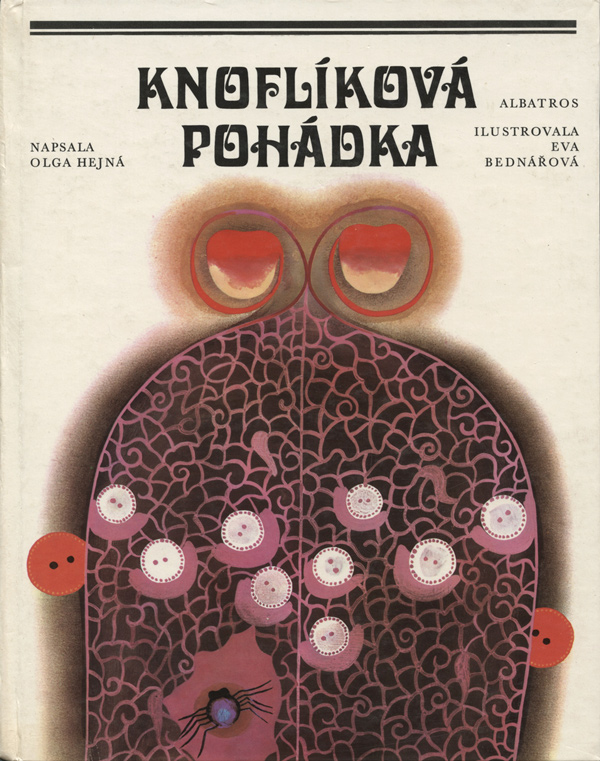 Eva Bednářová (1937–1986) was a prolific Czech illustrator who won both BIB and IBBY awards (major illustration awards). I haven't found a bio for her in English, but this Czech page includes a bibliography, a photo, and two amazing images (I want whatever books they come from). I stumbled on Knoflíková Pohádká in (of all places) Magus Books in Seattle.
I think just one book featuring Bednářová's work made it into English: Chinese Fairy Tales (Artia 1969, 1970s in English on Amazon). For the same Artia fairy tale series, she illustrated stories by Perrault and d'Aulnoy in 1978 (cheap French reprint here; will feature it someday) and stories from Tibet in 1974.
With this post I'm reviving a 2009–2010 series of posts featuring my own Czech kids' book collection. I have a whole shelf of them at this point. Expect more Stepan, Hoffmeister, Pacovska, Mates, Lada, Kudlacek, Salamoun, Serych, and Trnka.
Eva Bednářová (1937–1986) was a prolific Czech illustrator who won both BIB and IBBY awards (major illustration awards). I haven't found a bio for her in English, but this Czech page includes a bibliography, a photo, and two amazing images (I want whatever books they come from). I stumbled on Knoflíková Pohádká in (of all places) Magus Books in Seattle.
I think just one book featuring Bednářová's work made it into English: Chinese Fairy Tales (Artia 1969, 1970s in English on Amazon). For the same Artia fairy tale series, she illustrated stories by Perrault and d'Aulnoy in 1978 (cheap French reprint here; will feature it someday) and stories from Tibet in 1974.
With this post I'm reviving a 2009–2010 series of posts featuring my own Czech kids' book collection. I have a whole shelf of them at this point. Expect more Stepan, Hoffmeister, Pacovska, Mates, Lada, Kudlacek, Salamoun, Serych, and Trnka.
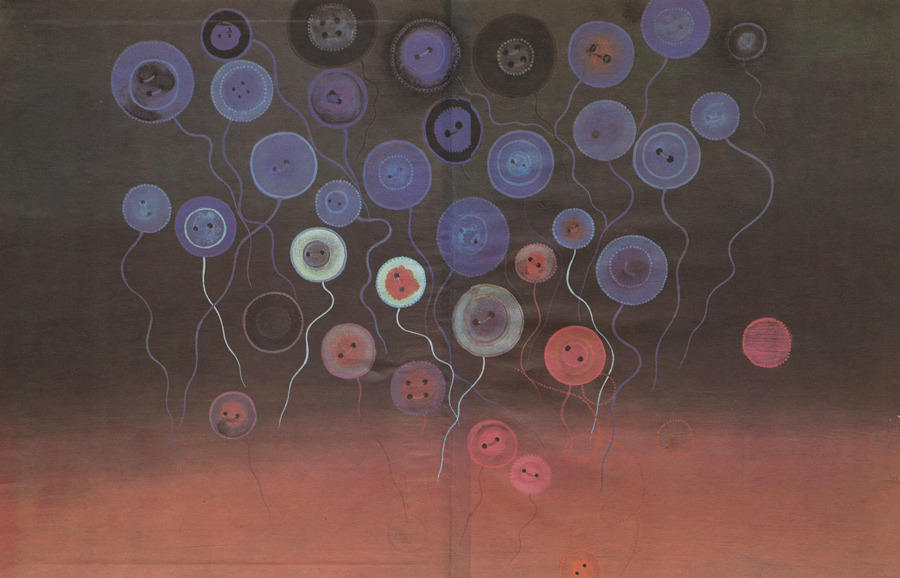 endpapers
endpapers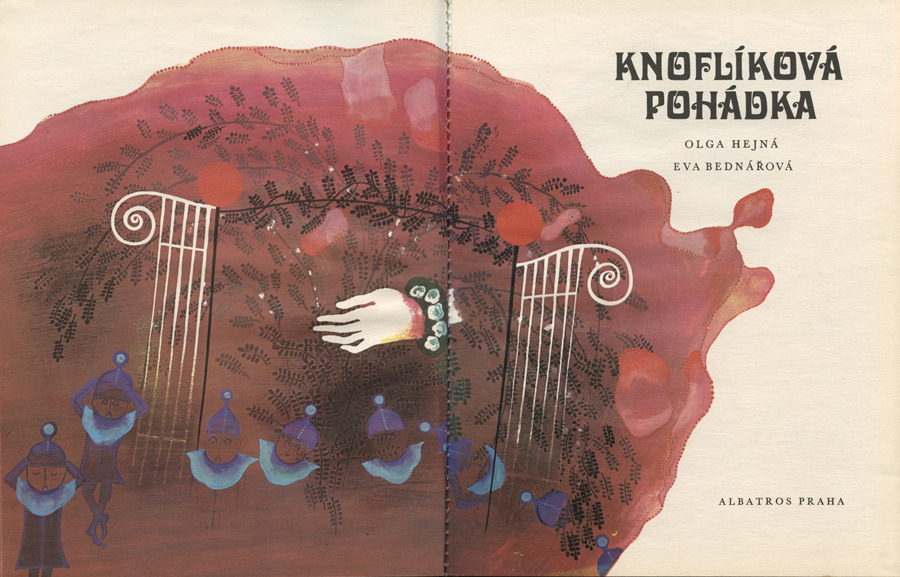

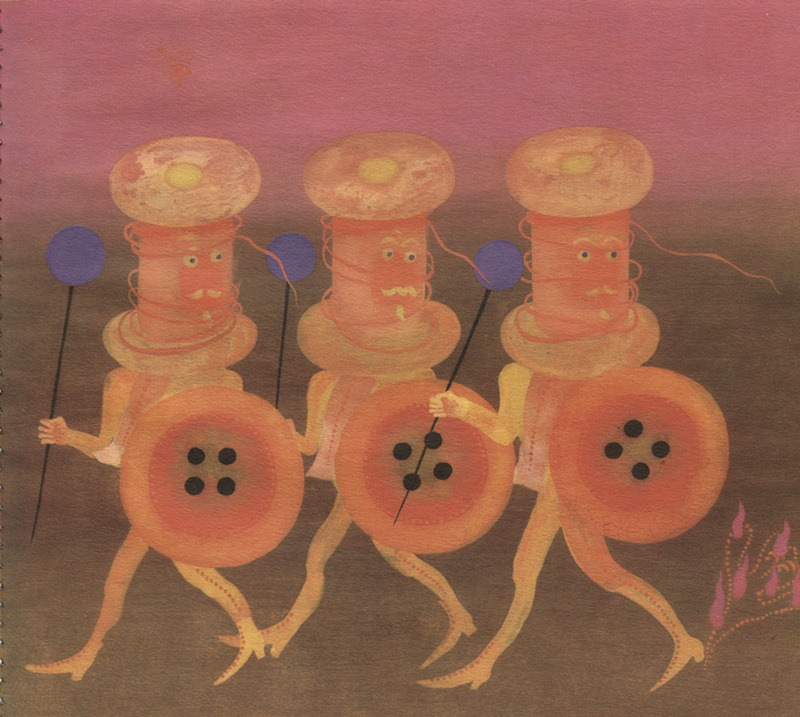
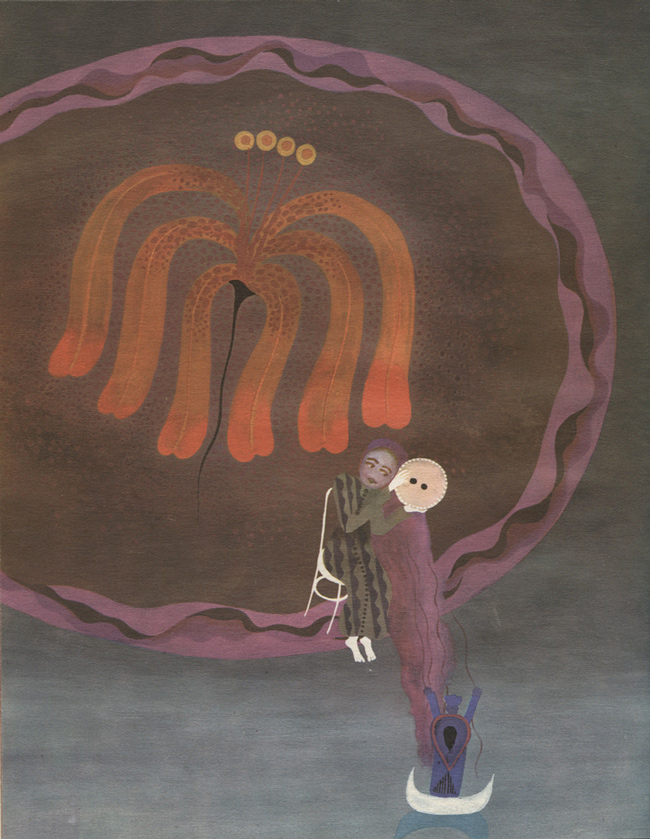

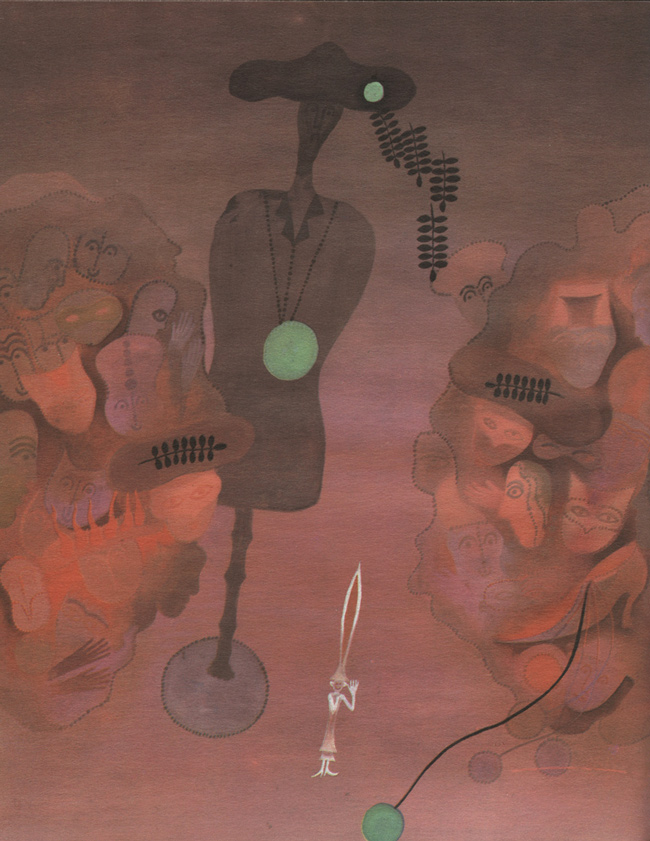
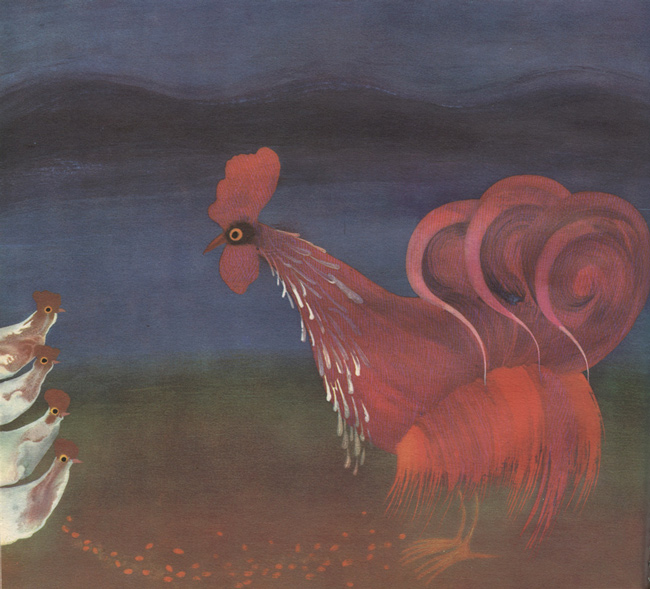
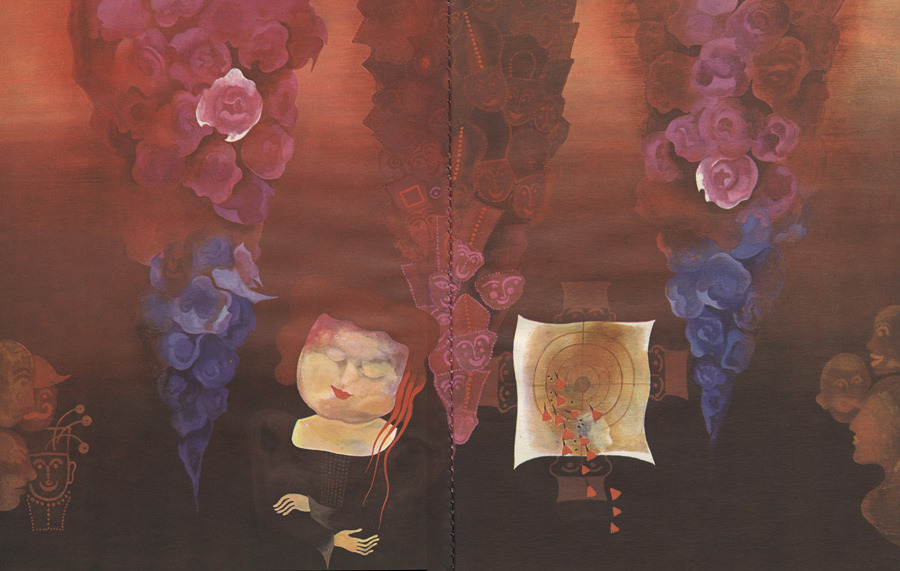


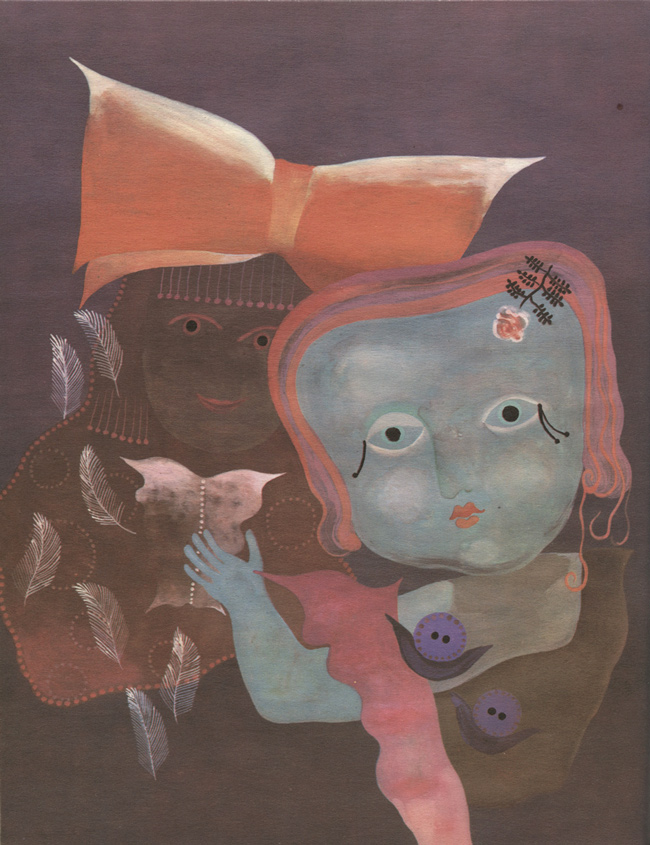

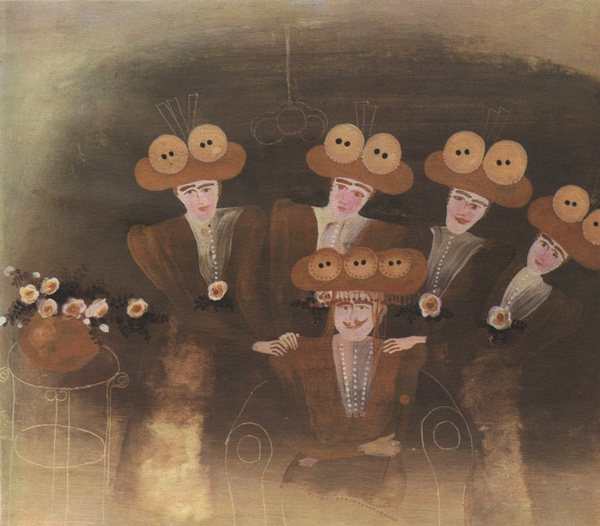
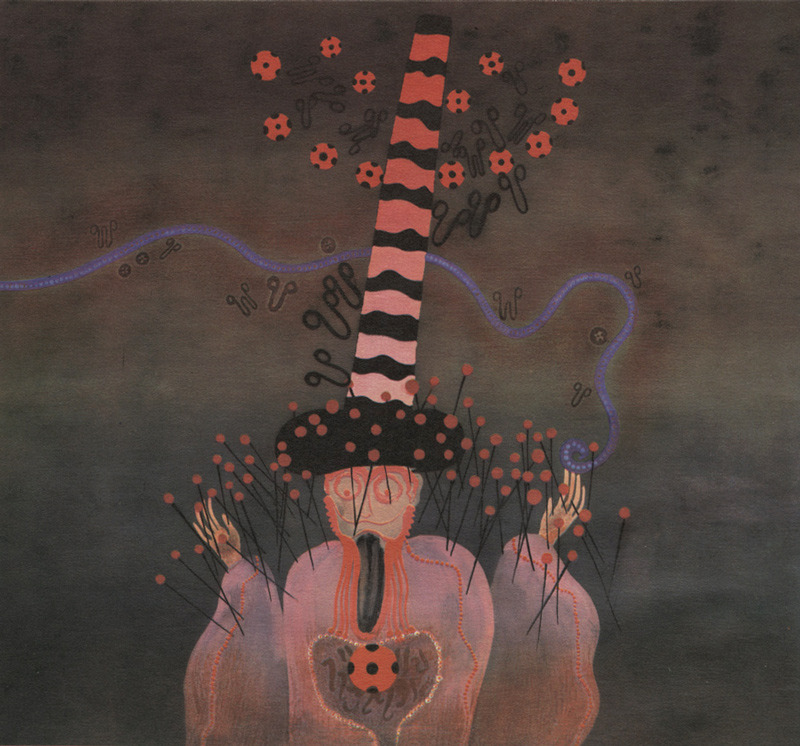 See all posts tagged Czech
See all posts tagged Czech
 Kenojuak Ashevak, The Enchanted Owl, 1960 via Canadian Art"The printmaker rolled ink on the stone block, allowing color to flow freely across forms and lines."
(from the book Inuit Print: Japanese Inspiration)
Kenojuak Ashevak, The Enchanted Owl, 1960 via Canadian Art"The printmaker rolled ink on the stone block, allowing color to flow freely across forms and lines."
(from the book Inuit Print: Japanese Inspiration) Dec. 1980 via
Dec. 1980 via Kenojuak Ashevak via Canadian Art
Kenojuak Ashevak via Canadian Art Kenojuak Ashevak, Winter Owls, 1975 via
Kenojuak Ashevak, Winter Owls, 1975 via Kenojuak Ashevak, Summer Owl, 1975 via
Kenojuak Ashevak, Summer Owl, 1975 via Kenojuak Ashevak, Ravens Guard the Sun Owl, 1979 via Feheley Fine Arts
Kenojuak Ashevak, Ravens Guard the Sun Owl, 1979 via Feheley Fine Arts Kenojuak Ashevak, Grand Dame, 2009 via North of Sixty
Kenojuak Ashevak, Grand Dame, 2009 via North of Sixty Kenojuak Ashevak, Curious Intruder, 2009 via North of Sixty
Kenojuak Ashevak, Curious Intruder, 2009 via North of Sixty Kenojuak Ashevak, Illustrious Owl via TCNJ
Kenojuak Ashevak, Illustrious Owl via TCNJ Kenojuak Ashevak, Majestic Owl via Ecla London
Kenojuak Ashevak, Majestic Owl via Ecla London Kenojuak Ashevak, Custodians of Ancestral Lore, 1992 via Feheley Fine Arts
Kenojuak Ashevak, Custodians of Ancestral Lore, 1992 via Feheley Fine Arts Kenojuak Ashevak, Quivering Seagull, 2004 via North of Sixty
Kenojuak Ashevak, Quivering Seagull, 2004 via North of Sixty Kenojuak Ashevak, Young Owl (etching & aquatint) via Elca London
Kenojuak Ashevak, Young Owl (etching & aquatint) via Elca London Kenojuak Ashevak, Katajaktuiit (Throat Singers Gathering), 1991 via North of Sixty
Kenojuak Ashevak, Katajaktuiit (Throat Singers Gathering), 1991 via North of Sixty Kenojuak Ashevak, Untitled, n.d. via North of Sixty
Kenojuak Ashevak, Untitled, n.d. via North of Sixty Kenojuak Ashevak, Sunlit Ravens, 2009 via North of Sixty
Kenojuak Ashevak, Sunlit Ravens, 2009 via North of Sixty Kenojuak Ashevak, Oracle, 1999 via North of Sixty
Kenojuak Ashevak, Oracle, 1999 via North of Sixty Kenojuak Ashevak, Child with Owls, 1974
Feheley Fine Arts
Kenojuak Ashevak, Child with Owls, 1974
Feheley Fine Arts Kenojuak Ashevak, Observant Owl, 2009 via North of Sixty
Kenojuak Ashevak, Observant Owl, 2009 via North of Sixty Kenojuak Ashevak, Timiat Juak (Large Birds), 1987 (lithograph)
Feheley Fine Arts
Kenojuak Ashevak, Timiat Juak (Large Birds), 1987 (lithograph)
Feheley Fine Arts Kenojuak Ashevak, Ravens Entwined, 2004 (lithograph) via North of Sixty
Previously: The Takeo Takei Lab of Ornithology
Kenojuak Ashevak, Ravens Entwined, 2004 (lithograph) via North of Sixty
Previously: The Takeo Takei Lab of Ornithology
 The Cubies' A B C is a mostly light-hearted jab at the Cubists in the guise of a children's book. Brancusi, Duchamp, Kandinsky, Picasso, and Stein are gently skewered in alphabetical order. The Lyalls sarcastically dedicate the book to The Association of American Painters and Sculptors, whose Armory Show introduced these artists to America.
The scans come from Beinecke, but it's easier to scroll through the book at archive.org.
The Cubies' A B C is a mostly light-hearted jab at the Cubists in the guise of a children's book. Brancusi, Duchamp, Kandinsky, Picasso, and Stein are gently skewered in alphabetical order. The Lyalls sarcastically dedicate the book to The Association of American Painters and Sculptors, whose Armory Show introduced these artists to America.
The scans come from Beinecke, but it's easier to scroll through the book at archive.org.


 "A is for Art in the Cubies' domain--
(Not the Art of the Ancients, brand-new are the Cubies.)
Archipenko's their guide, Anatomics their bane;
They're the joy of the mad, the despair of the sane,
(With their emerald hair and their eyes red as rubies.)
—A is for Art in the Cubies' domain."
"A is for Art in the Cubies' domain--
(Not the Art of the Ancients, brand-new are the Cubies.)
Archipenko's their guide, Anatomics their bane;
They're the joy of the mad, the despair of the sane,
(With their emerald hair and their eyes red as rubies.)
—A is for Art in the Cubies' domain."
 "B is for Beauty as Brancusi views it"
"B is for Beauty as Brancusi views it" "C is for Color Cubistic ad libitum—"
"C is for Color Cubistic ad libitum—"
 "D is for Duchamp, the Deep-Dyed Deceiver,
Who, drawing accordions, labels them stairs..."
"D is for Duchamp, the Deep-Dyed Deceiver,
Who, drawing accordions, labels them stairs..." "E is for the Ego, intense and Exotic"
"E is for the Ego, intense and Exotic" "F's for the Future for which Cubies hanker"
"F's for the Future for which Cubies hanker" "G is for Gertrude Stein's limpid lucidity,
(Eloquent scribe of the Futurist soul.)
Cubies devour each word with avidity:
'Alone words lack sense,' they affirm with placidity,
'But how wise we'll be when we've swallowed the whole!'
—G is for Gertrude Stein's limpid lucidity."
"G is for Gertrude Stein's limpid lucidity,
(Eloquent scribe of the Futurist soul.)
Cubies devour each word with avidity:
'Alone words lack sense,' they affirm with placidity,
'But how wise we'll be when we've swallowed the whole!'
—G is for Gertrude Stein's limpid lucidity."
 "H is for Henri's young Red Top, the shaver"
"H is for Henri's young Red Top, the shaver" "I's for the Cubies' Immense Intuition"
"I's for the Cubies' Immense Intuition" "K's for Kandinsky's Kute 'improvisations'"
"K's for Kandinsky's Kute 'improvisations'" "L is for Life that is 'still,' as they name it"
"L is for Life that is 'still,' as they name it" "M's for Matisse's Man'selle Marguerite"
"M's for Matisse's Man'selle Marguerite" "N's for the Nudes that the Cubies portray"
"N's for the Nudes that the Cubies portray" "T's for the Type of Tree Chabaud's erected"
"T's for the Type of Tree Chabaud's erected" "V is for Villon's musicianly lady"
"V is for Villon's musicianly lady" "W's for Woolworth, the building so stable"
"W's for Woolworth, the building so stable" "X is the Xit, Xtremely alluring
When Cubies invite us to study their Art"
"X is the Xit, Xtremely alluring
When Cubies invite us to study their Art" "Z is for Zak's summer-time composition"
"Z is for Zak's summer-time composition"
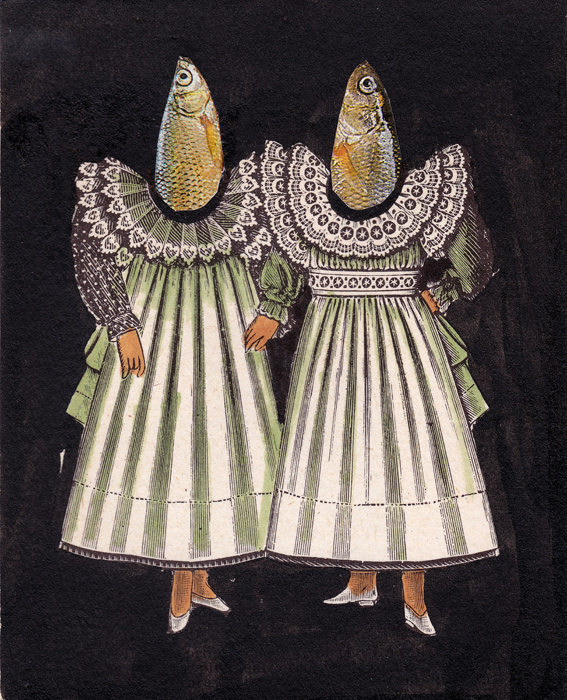 My stab at describing this work: Roland Topor and Hannah Höch attempt to illustrate the complete works of Lovecraft in one sweaty night, with Altered States distracting them in the background.
Daniel is also on Instagram (@danielhorowitzstudio) and now so am I (@50wattsdotcom).
My stab at describing this work: Roland Topor and Hannah Höch attempt to illustrate the complete works of Lovecraft in one sweaty night, with Altered States distracting them in the background.
Daniel is also on Instagram (@danielhorowitzstudio) and now so am I (@50wattsdotcom).

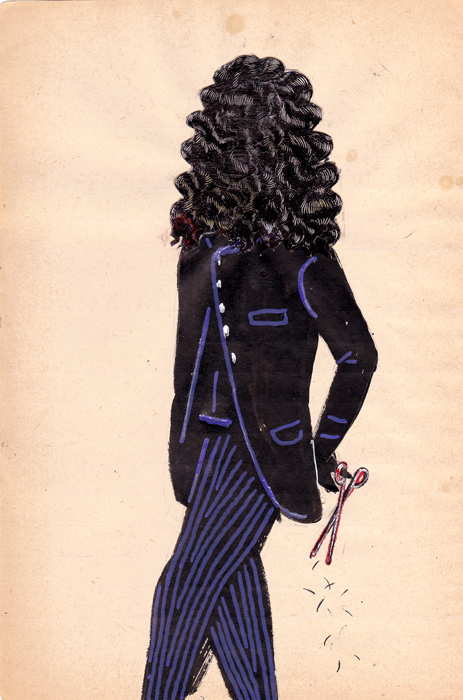
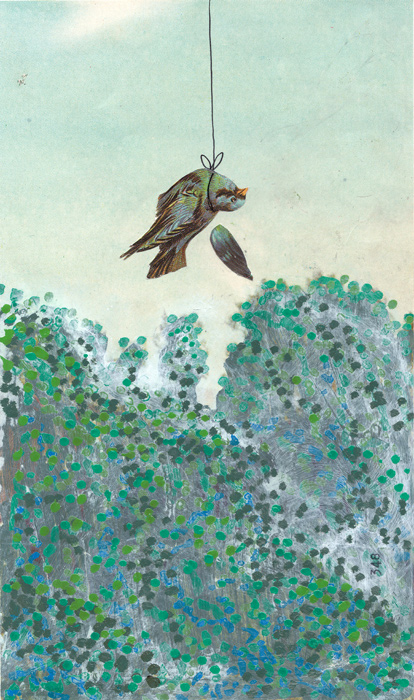
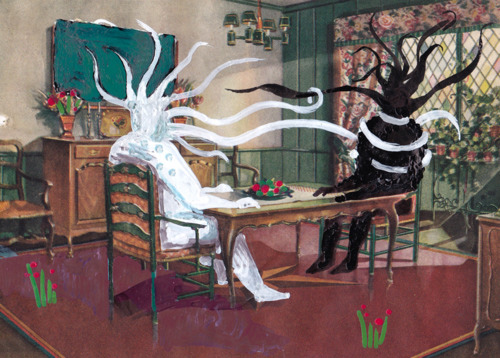
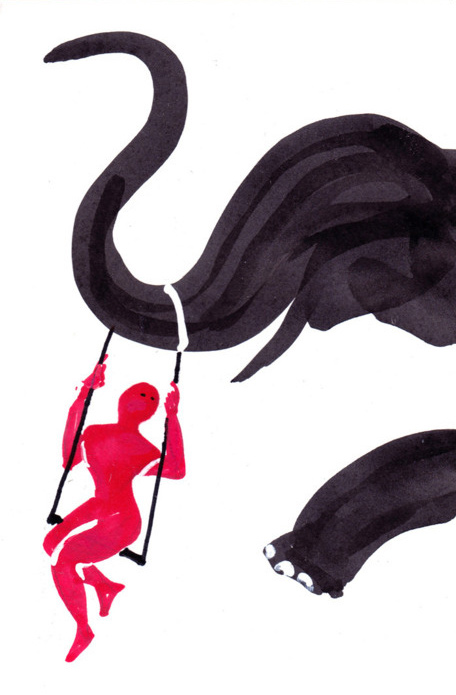
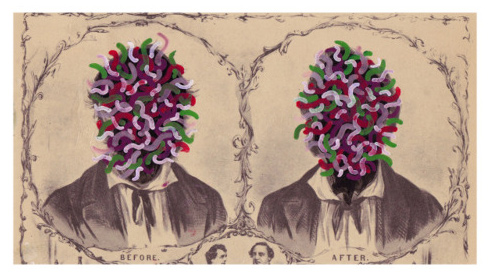
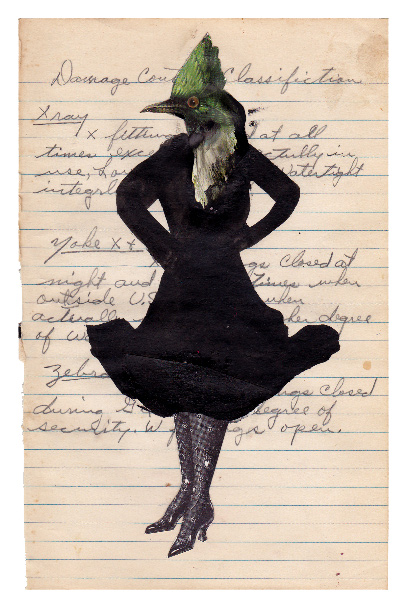
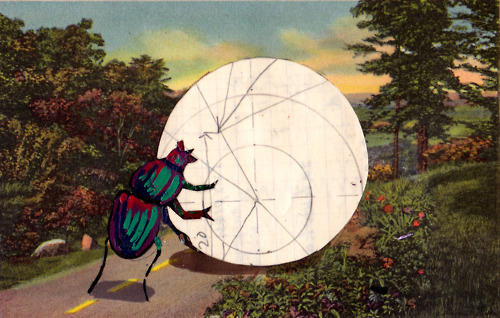


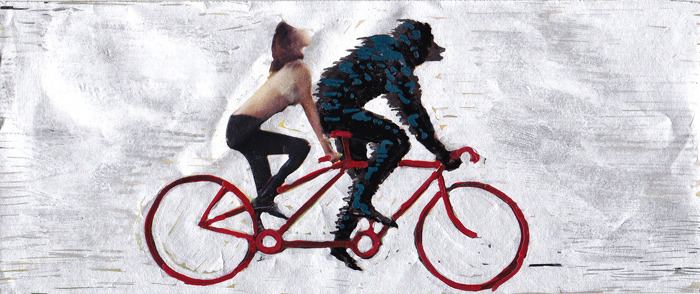
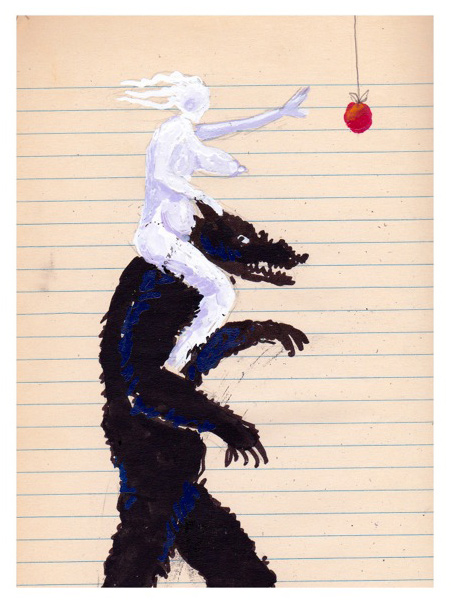



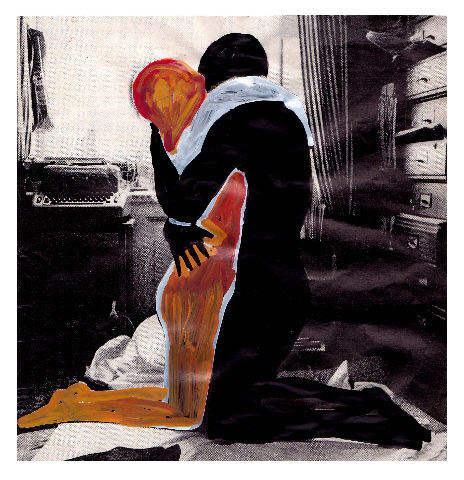
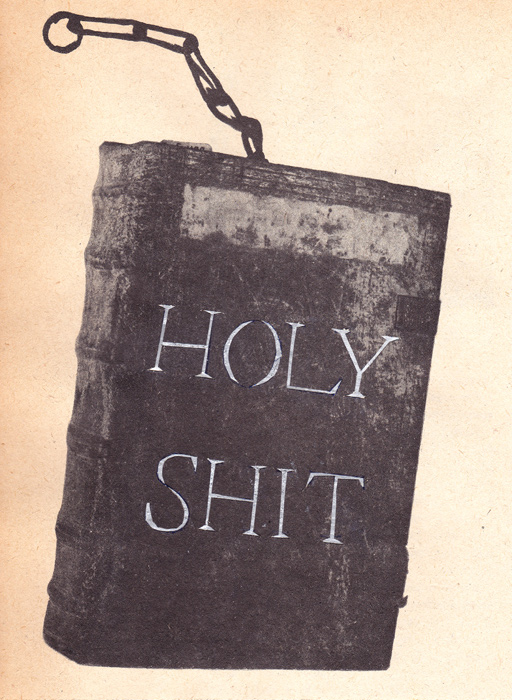
 I featured Michael Stoll's collection way back in May 2009 and since then it has grown considerably. His flickr page is definitely one of the richest sites for imagery around. He's outdone himself reproducing this book, which appears to glow in the dark. The photos make me want to toss my scanner in the trash.
Read a recent interview with Prof. Stoll at SND.
I featured Michael Stoll's collection way back in May 2009 and since then it has grown considerably. His flickr page is definitely one of the richest sites for imagery around. He's outdone himself reproducing this book, which appears to glow in the dark. The photos make me want to toss my scanner in the trash.
Read a recent interview with Prof. Stoll at SND.
















 View all posts tagged "science"
View all posts tagged "science"
 Clip #15726: Red Eagle (di. Lawrence Trimble, Vitagraph, 1911)
These frames are from the Davide Turconi Project, which is a record of the 35mm nitrate film frame clippings collected by Italian film historian Davide Turconi (1911–2005) from the Josef Joye Collection in Switzerland and from other unidentified sources. Housed primarily at George Eastman House, the collection consists of 23,491 clippings in total (usually two to three frames each). The vast majority of the frames cover the early years of cinema (from ca. 1897 to 1915)... [continue reading the history behind these images].
Joshua Yumibe has again provided the selection. Whereas the majority of the images in our first posting from the collection were largely pristine samples, this time the focus is on clips that contain advance stages of nitrate decomposition. Joshua says that "such frames make up a relatively small yet remarkable portion of the collection. As these shapes and hues have tragically faded in disintegrating emulsion, we are left with fragments that, through the workings of time, have transmuted into breathtaking images akin to abstract works of art."
Further information on the collection can be found in Josh’s book, Moving Color, which is deeply informed by the Turconi Project in its account of the earliest color films.
Images courtesy of George Eastman House Motion Picture Department Collection.
Clip #15726: Red Eagle (di. Lawrence Trimble, Vitagraph, 1911)
These frames are from the Davide Turconi Project, which is a record of the 35mm nitrate film frame clippings collected by Italian film historian Davide Turconi (1911–2005) from the Josef Joye Collection in Switzerland and from other unidentified sources. Housed primarily at George Eastman House, the collection consists of 23,491 clippings in total (usually two to three frames each). The vast majority of the frames cover the early years of cinema (from ca. 1897 to 1915)... [continue reading the history behind these images].
Joshua Yumibe has again provided the selection. Whereas the majority of the images in our first posting from the collection were largely pristine samples, this time the focus is on clips that contain advance stages of nitrate decomposition. Joshua says that "such frames make up a relatively small yet remarkable portion of the collection. As these shapes and hues have tragically faded in disintegrating emulsion, we are left with fragments that, through the workings of time, have transmuted into breathtaking images akin to abstract works of art."
Further information on the collection can be found in Josh’s book, Moving Color, which is deeply informed by the Turconi Project in its account of the earliest color films.
Images courtesy of George Eastman House Motion Picture Department Collection.
 Clip #12251: St. Francis of Assisi (di. Enrico Guazzoni, Cines, 1911)
Clip #12251: St. Francis of Assisi (di. Enrico Guazzoni, Cines, 1911) Clip #19762: Alboino e Rosmunda (di. Ernesto Maria Pasquali, Pasquali, 1911)
Clip #19762: Alboino e Rosmunda (di. Ernesto Maria Pasquali, Pasquali, 1911)
 Clip #21908: La Mort de Mozart (di. Louis Feuillade, Gaumont, 1909)
Clip #21908: La Mort de Mozart (di. Louis Feuillade, Gaumont, 1909)
 Clip #05843: La Vengeance du bottier (di. Max Linder, Pathé Frères, 1909)
Clip #05843: La Vengeance du bottier (di. Max Linder, Pathé Frères, 1909)
 Clip #11147: La lampada della nonna (di. Luigi Maggi, Ambrosio, 1913)
Clip #11147: La lampada della nonna (di. Luigi Maggi, Ambrosio, 1913)
 Clip #21972: Spaventare il deserto (Gaumont)
Clip #21972: Spaventare il deserto (Gaumont) Clip #21726: Des Kindes bester Freund (unid.)
Clip #21726: Des Kindes bester Freund (unid.) Clip #21277: Des Kindes bester Freund (unid.)
Clip #21277: Des Kindes bester Freund (unid.) Clip #23053: Moderne Dresseur (Pathé, 1910)
Clip #23053: Moderne Dresseur (Pathé, 1910)
 Clip #18088: Barbe bleu (Pathé, 1907)
Clip #18088: Barbe bleu (Pathé, 1907)
 Clip #08386: Le Chien du volontaire (Lux, 1909)
Clip #08386: Le Chien du volontaire (Lux, 1909) Clip #23279: Le Chien du volontaire (Lux, 1909)
Clip #23279: Le Chien du volontaire (Lux, 1909) Clip #14434: Unidentified
Clip #14434: Unidentified  Clip #23403: Unidentified (Gaumont)
Clip #23403: Unidentified (Gaumont) Clip #19794: Marin Faliero, Doge di Venezia (di. Giuseppe De Liguoro, SAFFI-Comerio, 1909)
Clip #19794: Marin Faliero, Doge di Venezia (di. Giuseppe De Liguoro, SAFFI-Comerio, 1909)
 Clip #19660: La Battaglia di Legnano (Cines, 1910)
Clip #19660: La Battaglia di Legnano (Cines, 1910) Clip #21894: La Mort de Mozart (di. Louis Feuillade, Gaumont, 1909)
Clip #21894: La Mort de Mozart (di. Louis Feuillade, Gaumont, 1909)
 Clip #21890: La Mort de Mozart (di. Louis Feuillade, Gaumont, 1909)
Clip #21890: La Mort de Mozart (di. Louis Feuillade, Gaumont, 1909)
 Clip #21907: La Mort de Mozart (di. Louis Feuillade, Gaumont, 1909)
Clip #21907: La Mort de Mozart (di. Louis Feuillade, Gaumont, 1909)
 ca. 1960 via Memory of the Netherlands
Most of these come from the huge archive Geheugenvannederland.nl (Memory of the Netherlands). A handful are from expired auction listings.
ca. 1960 via Memory of the Netherlands
Most of these come from the huge archive Geheugenvannederland.nl (Memory of the Netherlands). A handful are from expired auction listings.
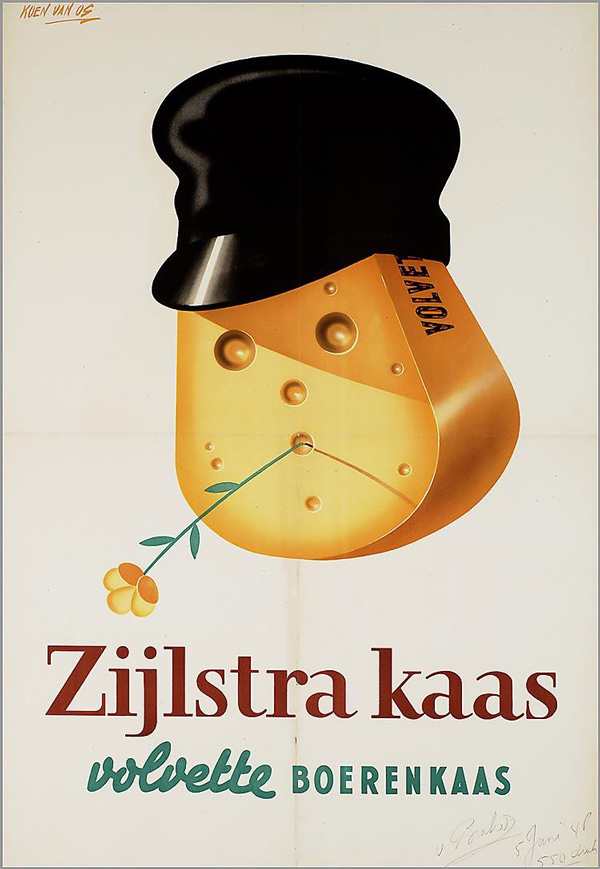 1948–1949 via Memory of the Netherlands
1948–1949 via Memory of the Netherlands
 ca. 1955
ca. 1955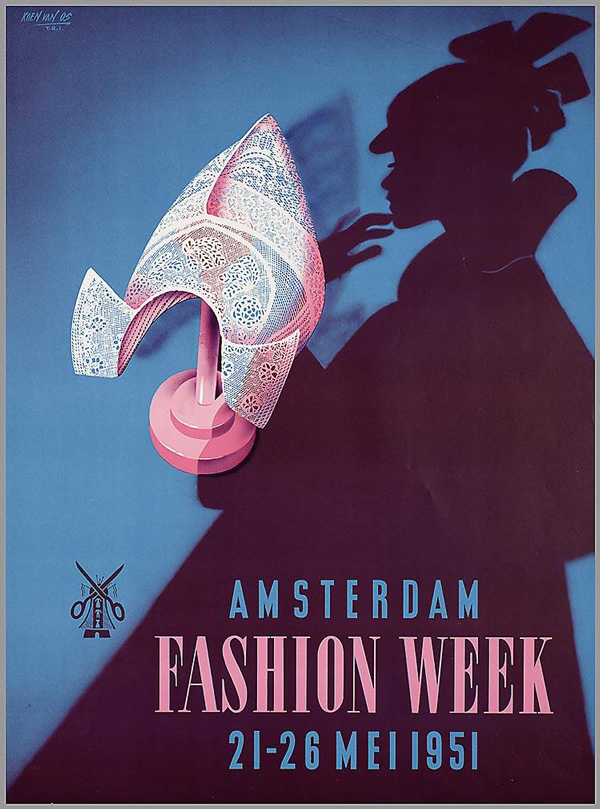 1951 via Memory of the Netherlands
1951 via Memory of the Netherlands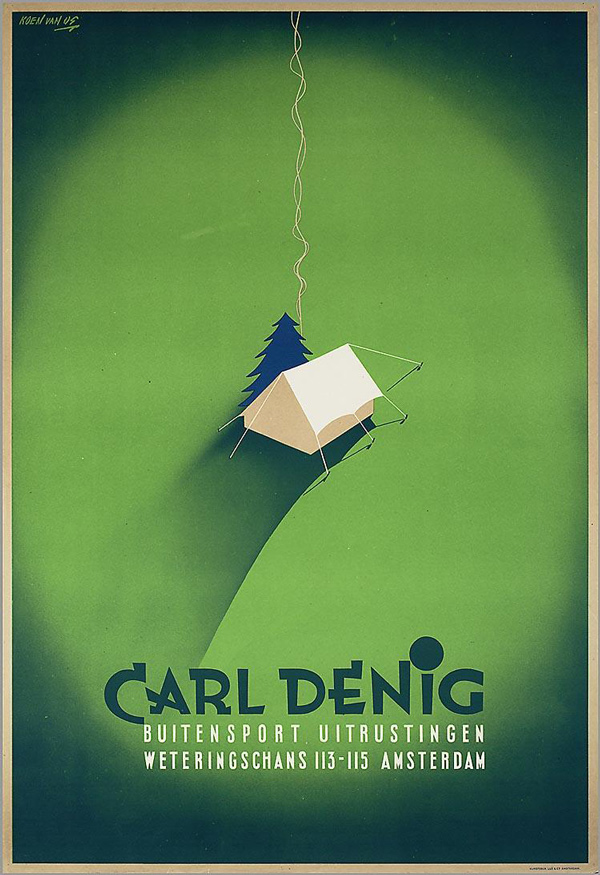 ca. 1930–1950 via Memory of the Netherlands
ca. 1930–1950 via Memory of the Netherlands
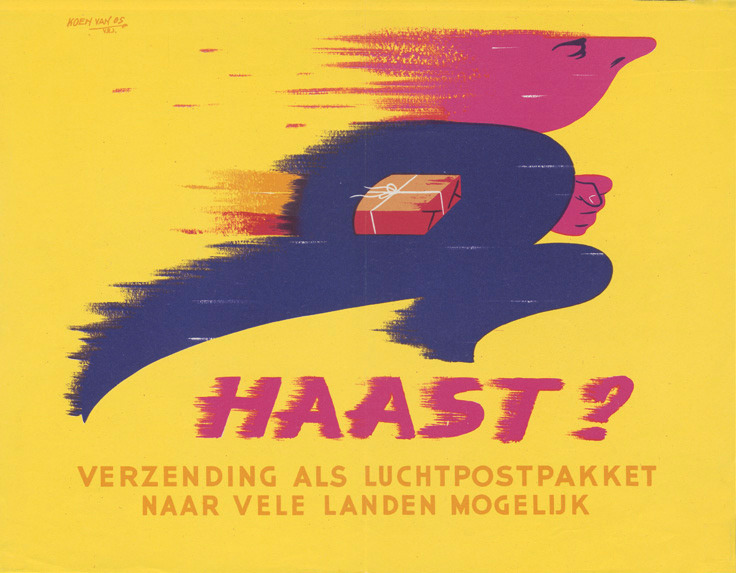 1951 via Memory of the Netherlands
1951 via Memory of the Netherlands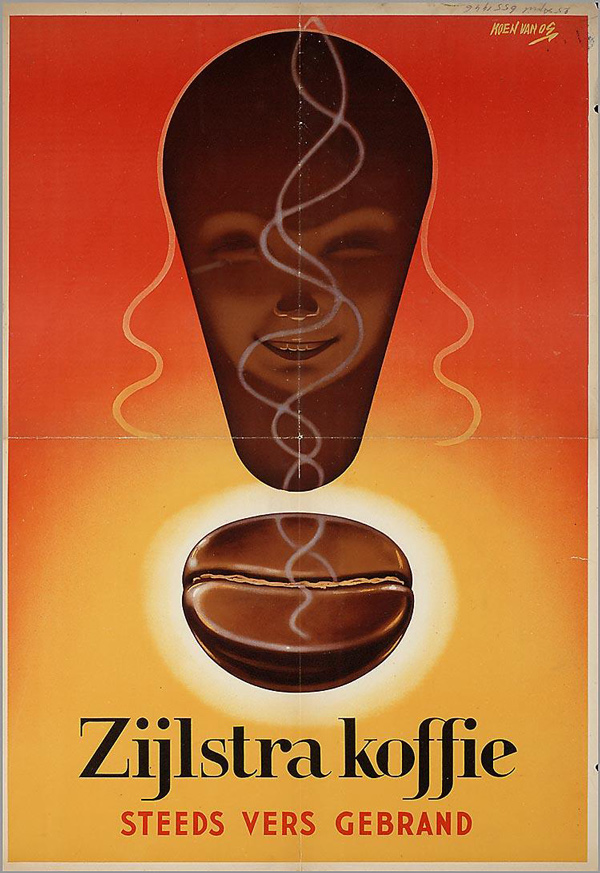 1946–1947 via Memory of the Netherlands
1946–1947 via Memory of the Netherlands
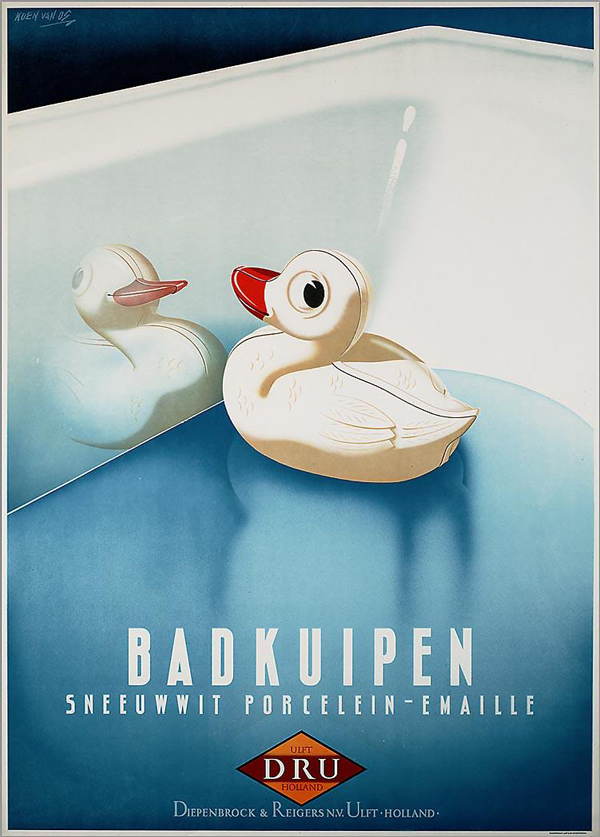 ca. 1950–1975 via Memory of the Netherlands
ca. 1950–1975 via Memory of the Netherlands
 ca. 1955–1965 via Memory of the Netherlands
ca. 1955–1965 via Memory of the Netherlands
 1950 via Memory of the Netherlands
1950 via Memory of the Netherlands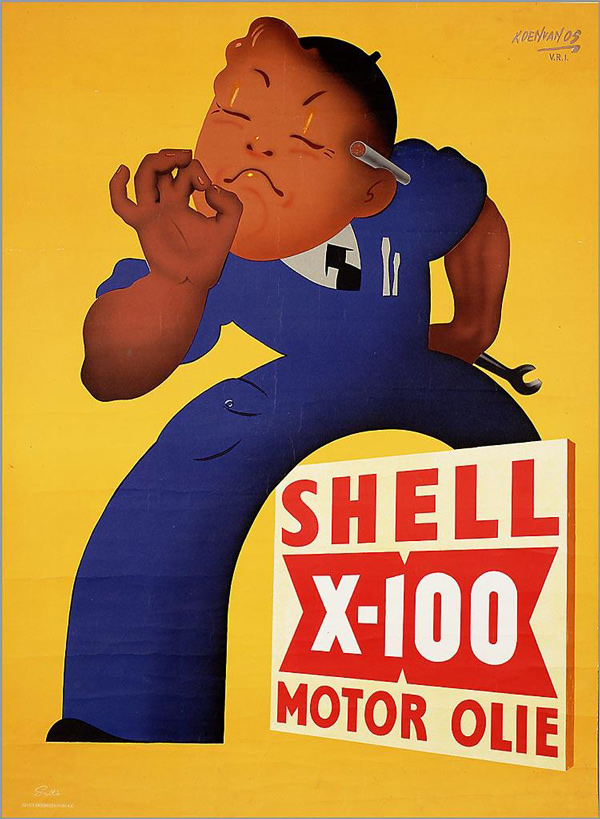 1950–1975 via Memory of the Netherlands
1950–1975 via Memory of the Netherlands
 1955–1960 via Memory of the Netherlands
1955–1960 via Memory of the Netherlands
 1953–1954 via Memory of the Netherlands
1953–1954 via Memory of the Netherlands
 ca. 1950
ca. 1950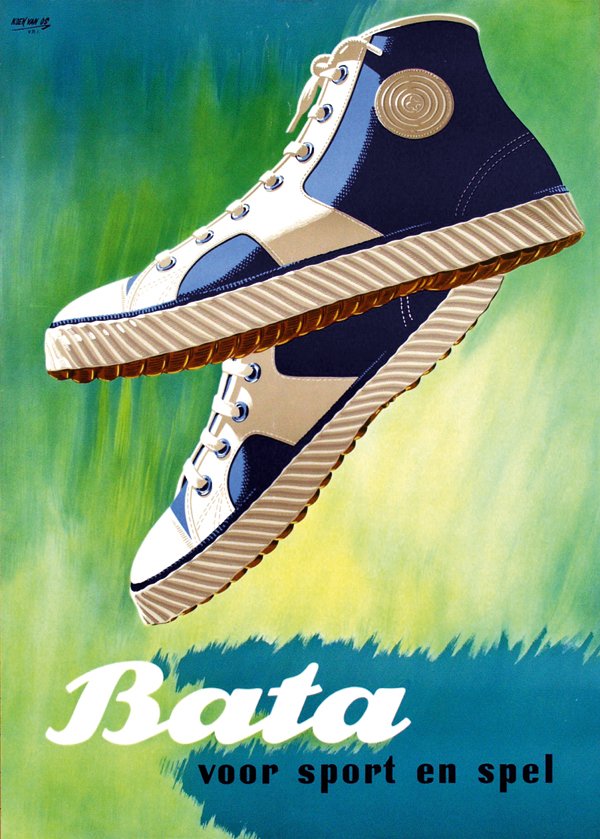 ca. 1952
ca. 1952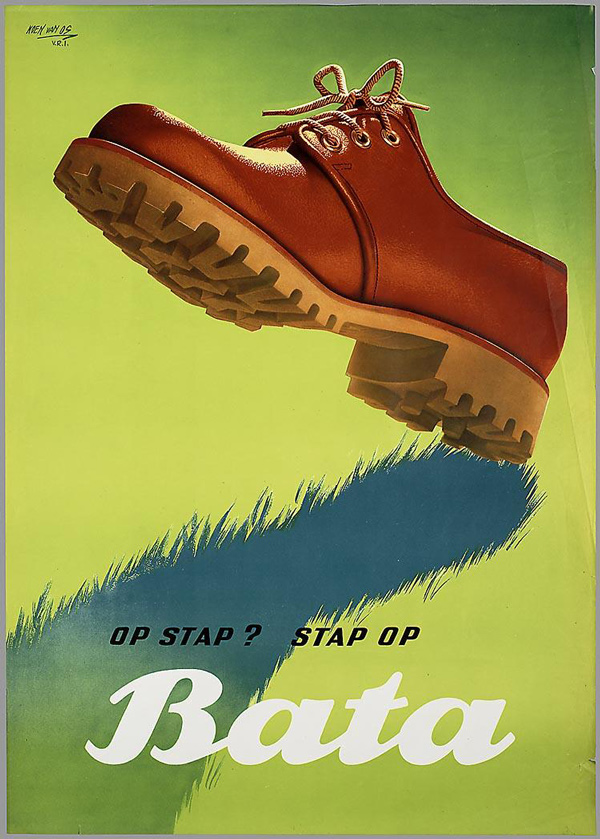 1952–1953 via Memory of the Netherlands
1952–1953 via Memory of the Netherlands
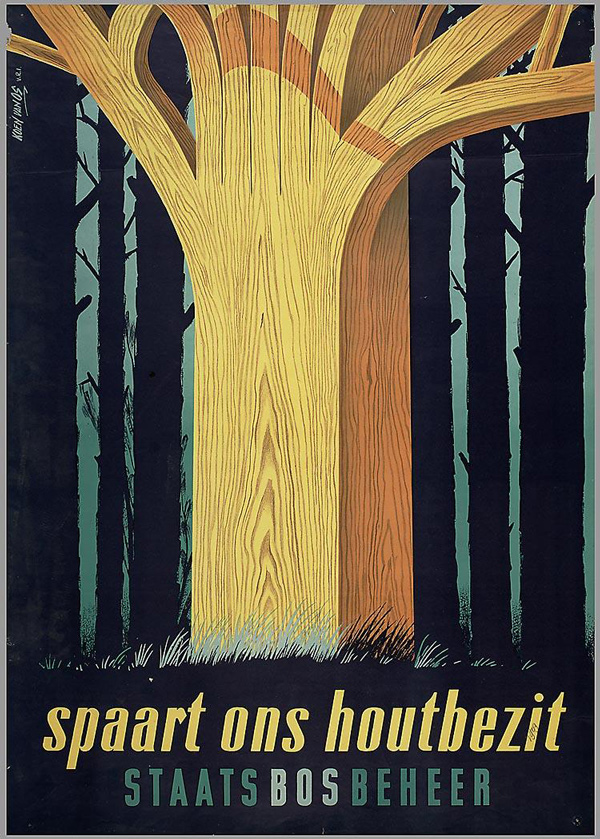 1950–1960 via Memory of the Netherlands
1950–1960 via Memory of the Netherlands
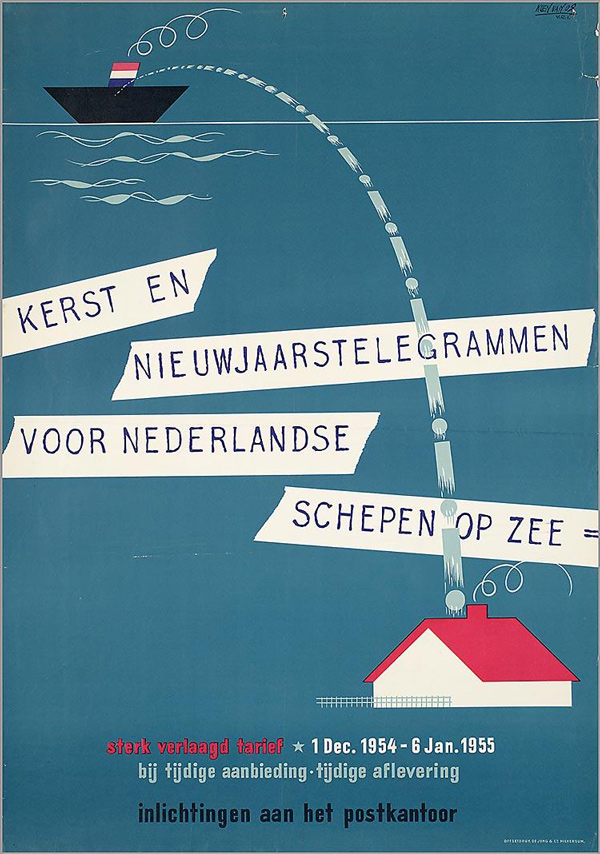 1954–1955 via Memory of the Netherlands
1954–1955 via Memory of the Netherlands
 ca. 1950–1975 via Memory of the Netherlands
ca. 1950–1975 via Memory of the Netherlands
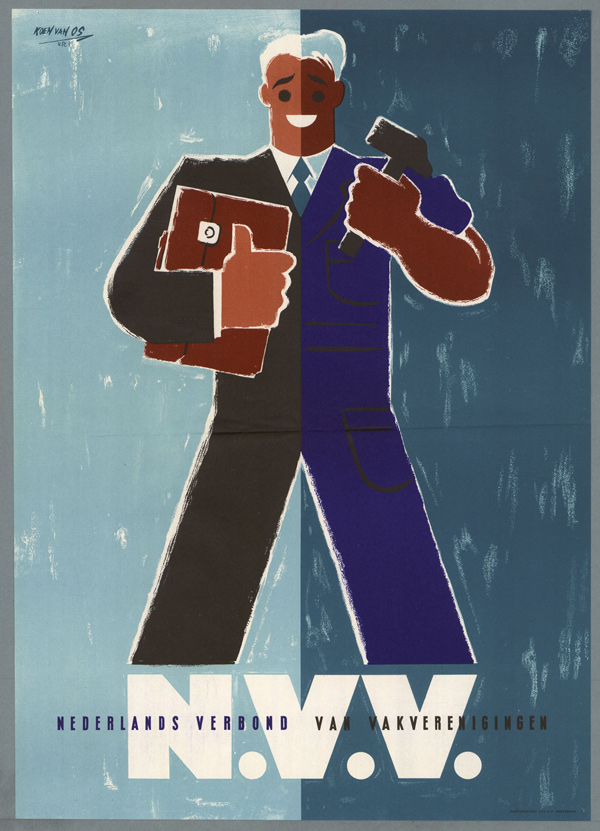 1955 via Memory of the Netherlands
1955 via Memory of the Netherlands ca. 1955
ca. 1955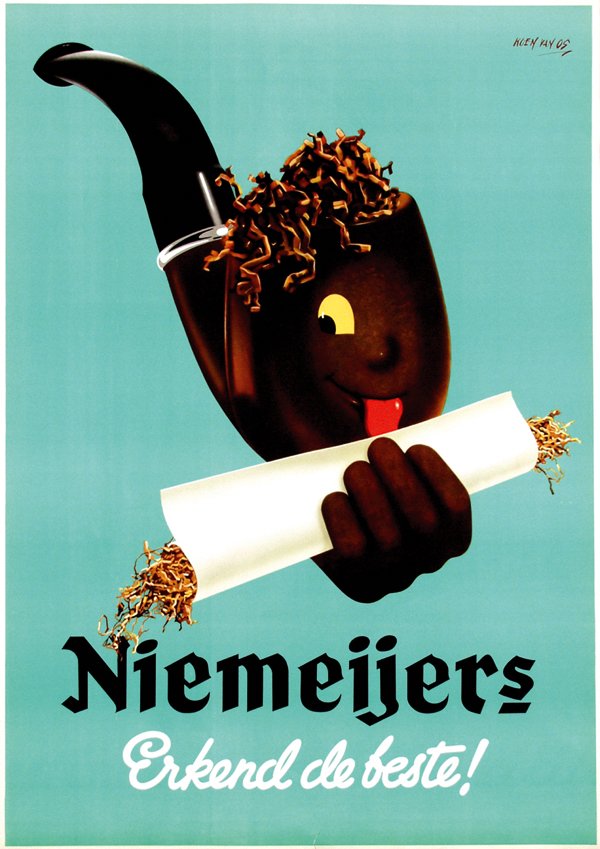 ca. 1950
ca. 1950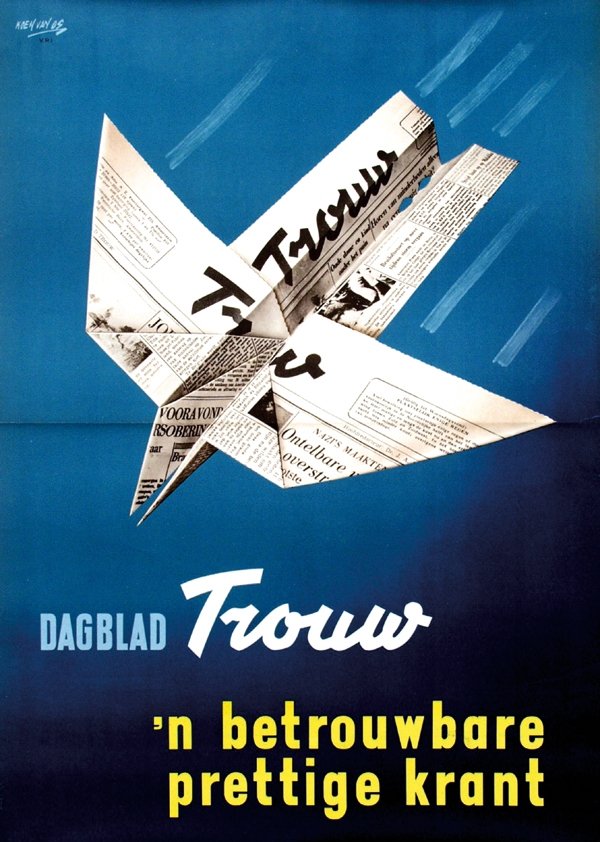 ca. 1955
ca. 1955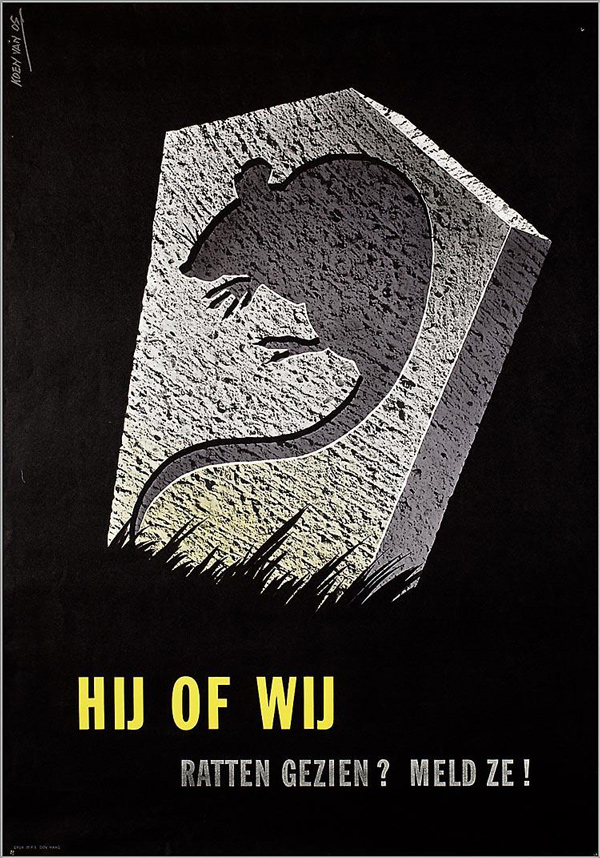 ca. 1930–1950 via Memory of the Netherlands
ca. 1930–1950 via Memory of the Netherlands
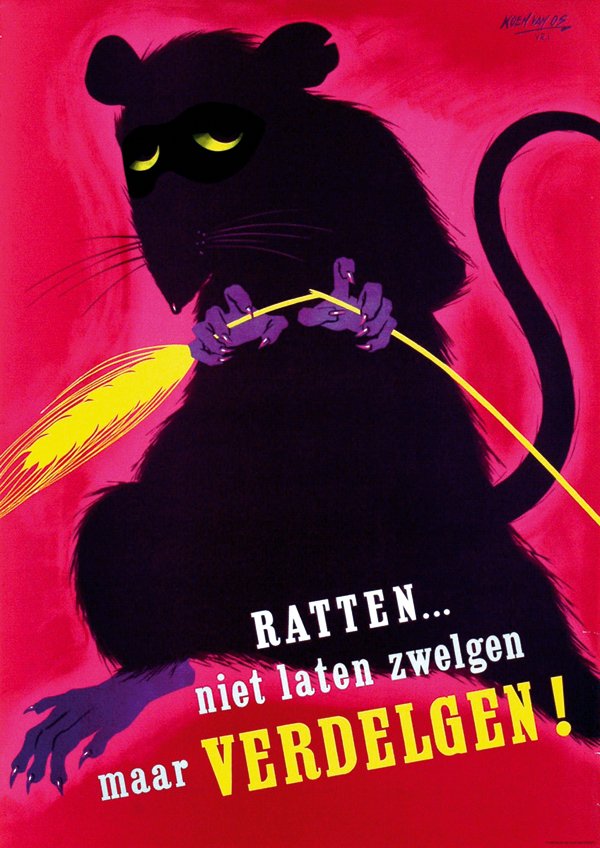 ca. 1960
Previously: Mussolini's Toothpaste
ca. 1960
Previously: Mussolini's Toothpaste
 Pierre Ferrero (website / tumblr)
Pierre Ferrero is an illustrator/comic designer from France and a member of Arbitraire Editions.. I just bought a bunch of stunning Arbitraire anthologies and hope to feature more artists who appear in them.
Pierre Ferrero (website / tumblr)
Pierre Ferrero is an illustrator/comic designer from France and a member of Arbitraire Editions.. I just bought a bunch of stunning Arbitraire anthologies and hope to feature more artists who appear in them.
 Pierre Ferrero (website / tumblr)
Pierre Ferrero (website / tumblr) Pierre Ferrero (website / tumblr)
Pierre Ferrero (website / tumblr) Pierre Ferrero (website / tumblr)
Pierre Ferrero (website / tumblr) Pierre Ferrero (website / tumblr)
Pierre Ferrero (website / tumblr) Pierre Ferrero (website / tumblr)
Pierre Ferrero (website / tumblr) Pierre Ferrero (website / tumblr)
Pierre Ferrero (website / tumblr) Pierre Ferrero (website / tumblr)
Pierre Ferrero (website / tumblr) Pierre Ferrero (website / tumblr)
Pierre Ferrero (website / tumblr) Pierre Ferrero (website / tumblr)
Pierre Ferrero (website / tumblr) Pierre Ferrero (website / tumblr)
Pierre Ferrero (website / tumblr) Pierre Ferrero (website / tumblr)
Pierre Ferrero (website / tumblr) Pierre Ferrero (website / tumblr)
Pierre Ferrero (website / tumblr)
 from Mapmaker by Trevor Naud (tumblr / flickr)
I'm very happy to own a Mapmaker box from Trevor Naud.Each set contains 28 graphic images printed on 285-gram watercolor paper. The box is made from solid walnut and brass with a curly maple inlay. Dimensions: 6.5” x 5” x 1.75.”
All artwork by Trevor Naud. Box design by Matthew Tait.
I get really amazing mail!
from Mapmaker by Trevor Naud (tumblr / flickr)
I'm very happy to own a Mapmaker box from Trevor Naud.Each set contains 28 graphic images printed on 285-gram watercolor paper. The box is made from solid walnut and brass with a curly maple inlay. Dimensions: 6.5” x 5” x 1.75.”
All artwork by Trevor Naud. Box design by Matthew Tait.
I get really amazing mail!
 from Mapmaker by Trevor Naud (tumblr / flickr)
from Mapmaker by Trevor Naud (tumblr / flickr) from Mapmaker by Trevor Naud (tumblr / flickr)
from Mapmaker by Trevor Naud (tumblr / flickr) from Mapmaker by Trevor Naud (tumblr / flickr)
from Mapmaker by Trevor Naud (tumblr / flickr) from Mapmaker by Trevor Naud (tumblr / flickr)
from Mapmaker by Trevor Naud (tumblr / flickr) from Mapmaker by Trevor Naud (tumblr / flickr)
from Mapmaker by Trevor Naud (tumblr / flickr) from Mapmaker by Trevor Naud (tumblr / flickr)
from Mapmaker by Trevor Naud (tumblr / flickr) from Mapmaker by Trevor Naud (tumblr / flickr)
from Mapmaker by Trevor Naud (tumblr / flickr)
 Les Monstres du Placard 2 / Caza's blog
I selected some of my favorite images here, but my God, I have so many more favorites. (See more on But Does it Float.) Both e-books are available in hi-res PDF and epub formats—a ton of rare work lovingly assembled and restored by Caza and his son Romain. Support them and buy them! (30 x 30 even comes as a limited USB.)
Previously: Caza's 1970 psychedelic graphic novel masterpiece Kris Kool (ebook).
Les Monstres du Placard 2 / Caza's blog
I selected some of my favorite images here, but my God, I have so many more favorites. (See more on But Does it Float.) Both e-books are available in hi-res PDF and epub formats—a ton of rare work lovingly assembled and restored by Caza and his son Romain. Support them and buy them! (30 x 30 even comes as a limited USB.)
Previously: Caza's 1970 psychedelic graphic novel masterpiece Kris Kool (ebook).
 Les Monstres du Placard 2 / Caza's blog
Les Monstres du Placard 2 / Caza's blog Les Monstres du Placard 2 / Caza's blog
Les Monstres du Placard 2 / Caza's blog Les Monstres du Placard 2 / Caza's blog
Les Monstres du Placard 2 / Caza's blog Les Monstres du Placard 2 / Caza's blog
Les Monstres du Placard 2 / Caza's blog Les Monstres du Placard 2 / Caza's blog
Les Monstres du Placard 2 / Caza's blog Caza 30 x 30 / Caza's blog
Caza 30 x 30 / Caza's blog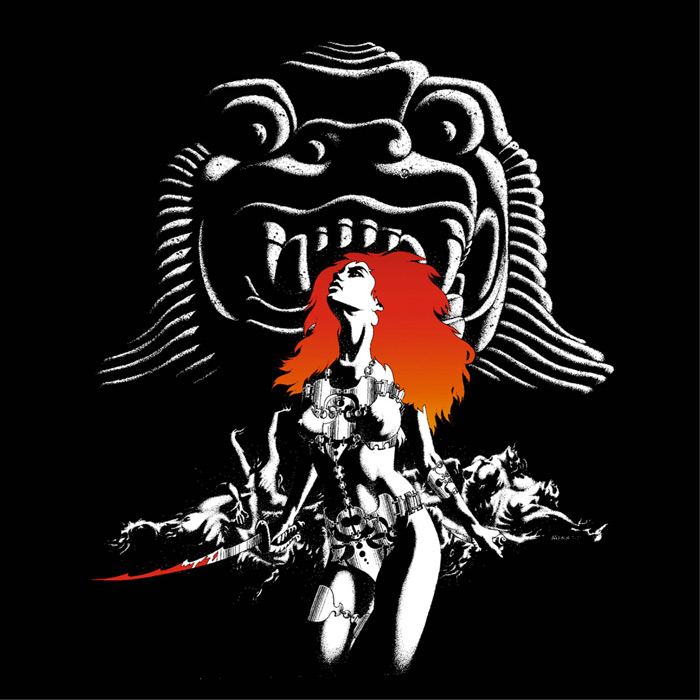 Caza 30 x 30 / Caza's blog
Caza 30 x 30 / Caza's blog Caza 30 x 30 / Caza's blog
Caza 30 x 30 / Caza's blog Caza 30 x 30 / Caza's blog
Caza 30 x 30 / Caza's blog Caza 30 x 30 / Caza's blog
Caza 30 x 30 / Caza's blog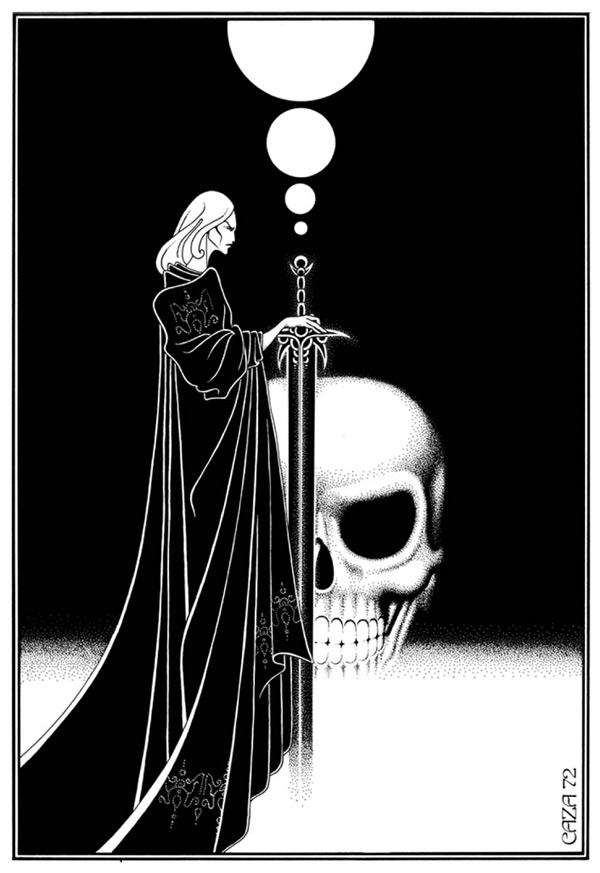 Caza 30 x 30 / Caza's blog
Elric
Caza 30 x 30 / Caza's blog
Elric Caza 30 x 30 / Caza's blog
Caza 30 x 30 / Caza's blog Caza 30 x 30 / Caza's blog
Caza 30 x 30 / Caza's blog Caza 30 x 30 / Caza's blog
Previously: Kris Kool and Vintage Caza
Thanks again to David @ Jive Time Records for sharing Kris Kool last year.
[50 Watts Facebook page]
Caza 30 x 30 / Caza's blog
Previously: Kris Kool and Vintage Caza
Thanks again to David @ Jive Time Records for sharing Kris Kool last year.
[50 Watts Facebook page]
 From "Video 2012"
Details from PictureBox:
Men's Group: The Video
Ben Jones
The last five years of the Ben's paintings, comics, drawings, products and videos, published on the the occasion of the artist’s solo exhibition, The Video, at the Museum of Contemporary Art, L.A. Included is a series of texts about manhood by Peter Saul, Gary Panter, Joe Bradley, Keith McCulloch, Byron Coley and Phil Grauer, with an introduction by Nicole Rudick. Also: two interviews with Jones by Dan Nadel and David Kramer. Printed on multiple paper sizes and stocks bound together with a spiral wire and wrapped between thick chipboard covers.
First 150 orders get a book signed by Ben Jones and a Ben-designed tote bag.
Full color / 188 pages / 10" x 13"
From "Video 2012"
Details from PictureBox:
Men's Group: The Video
Ben Jones
The last five years of the Ben's paintings, comics, drawings, products and videos, published on the the occasion of the artist’s solo exhibition, The Video, at the Museum of Contemporary Art, L.A. Included is a series of texts about manhood by Peter Saul, Gary Panter, Joe Bradley, Keith McCulloch, Byron Coley and Phil Grauer, with an introduction by Nicole Rudick. Also: two interviews with Jones by Dan Nadel and David Kramer. Printed on multiple paper sizes and stocks bound together with a spiral wire and wrapped between thick chipboard covers.
First 150 orders get a book signed by Ben Jones and a Ben-designed tote bag.
Full color / 188 pages / 10" x 13"
 From "Video 2012""These video paintings consist of red, green and blue light projected onto a traditional painted surface.
"To form a color using RGB, each colored light beam is superimposed and emitted from a black screen, or via reflection onto a white screen.
"Each of these three beams is a component of that color, and each possesses an arbitrary intensity within the mix, from fully off to fully on."
From "Video 2012""These video paintings consist of red, green and blue light projected onto a traditional painted surface.
"To form a color using RGB, each colored light beam is superimposed and emitted from a black screen, or via reflection onto a white screen.
"Each of these three beams is a component of that color, and each possesses an arbitrary intensity within the mix, from fully off to fully on."
 "Portrait of Howard Stern"
"Portrait of Howard Stern" From "Video 2012"
From "Video 2012" From "Black Math 2009" series
From "Black Math 2009" series painting, 2010
painting, 2010
 From "Black Math 2009" series
From "Black Math 2009" series "Dog Bench, standard bench height, fits 2. Produced by Johnson Trading Gallery"
"Dog Bench, standard bench height, fits 2. Produced by Johnson Trading Gallery" From "Video 2012"
From "Video 2012" From "Video 2012"
From "Video 2012" From ROADTRIP2012, "an installation for the exhibition Transmission LA, at the Museum of Contemporary Art, Los Angeles"
Previously: Smoke Hairy Who and Worse Sum
From ROADTRIP2012, "an installation for the exhibition Transmission LA, at the Museum of Contemporary Art, Los Angeles"
Previously: Smoke Hairy Who and Worse Sum
 Rilla writes:
Yes, we're already steaming headway into the middle of the year, but I'm making good on my new year's resolution – sharing some of my projects which, for one reason or another, have not been produced. Until now. First up is an edition of the Grimm Brothers Fairy Tale Jorinde & Joringel.
I illustrated this story before Her Idea and it convinced me I could finally tell my own story. So it's certainly high time you had the chance to see it. After all, Jorinde & Joringel is a little known tale outside of Germany – and keeping it in my drawer is not helping the cause!
2013 is looking up if Rilla is going to be making more books!
Rilla writes:
Yes, we're already steaming headway into the middle of the year, but I'm making good on my new year's resolution – sharing some of my projects which, for one reason or another, have not been produced. Until now. First up is an edition of the Grimm Brothers Fairy Tale Jorinde & Joringel.
I illustrated this story before Her Idea and it convinced me I could finally tell my own story. So it's certainly high time you had the chance to see it. After all, Jorinde & Joringel is a little known tale outside of Germany – and keeping it in my drawer is not helping the cause!
2013 is looking up if Rilla is going to be making more books!







 Previously: Her Idea
Previously: Her Idea
 The publisher notes, "Fish On A Walk has no text other than two words at the bottom of each picture. This unusual format serves to suggest ideas that are central to each illustration without telling the story, thereby encouraging children to imagine and invent. Packed with many funny details, this book is perfectly suited to young picture book explorers who tend to seek out small, almost hidden things."
I didn't spoil the surprise by including the words at the bottom of the three pictures here. Just buy it (Amazon link).
Profile from Litrix:
Eva Muggenthaler, born 1971 in Fürth, studied book illustrating and graphic art at Hamburg’s Academy of Design. She illustrated Das grosse Nöstlinger Lesebuch [The big book of Nöstlinger stories] and Peter Härtling’s Ben liebt Anna [Ben loves Anna], published by Beltz & Gelberg. In 1997 the Peter Hammer Verlag published her first solo picture book, Der Schäfer Raul [The shepherd Raul], which was nominated for the German Children’s Literature Prize. Eva Muggenthaler works at the AmAldi Studios in Hamburg and lives with her family in Schwabstedt.
The publisher notes, "Fish On A Walk has no text other than two words at the bottom of each picture. This unusual format serves to suggest ideas that are central to each illustration without telling the story, thereby encouraging children to imagine and invent. Packed with many funny details, this book is perfectly suited to young picture book explorers who tend to seek out small, almost hidden things."
I didn't spoil the surprise by including the words at the bottom of the three pictures here. Just buy it (Amazon link).
Profile from Litrix:
Eva Muggenthaler, born 1971 in Fürth, studied book illustrating and graphic art at Hamburg’s Academy of Design. She illustrated Das grosse Nöstlinger Lesebuch [The big book of Nöstlinger stories] and Peter Härtling’s Ben liebt Anna [Ben loves Anna], published by Beltz & Gelberg. In 1997 the Peter Hammer Verlag published her first solo picture book, Der Schäfer Raul [The shepherd Raul], which was nominated for the German Children’s Literature Prize. Eva Muggenthaler works at the AmAldi Studios in Hamburg and lives with her family in Schwabstedt.
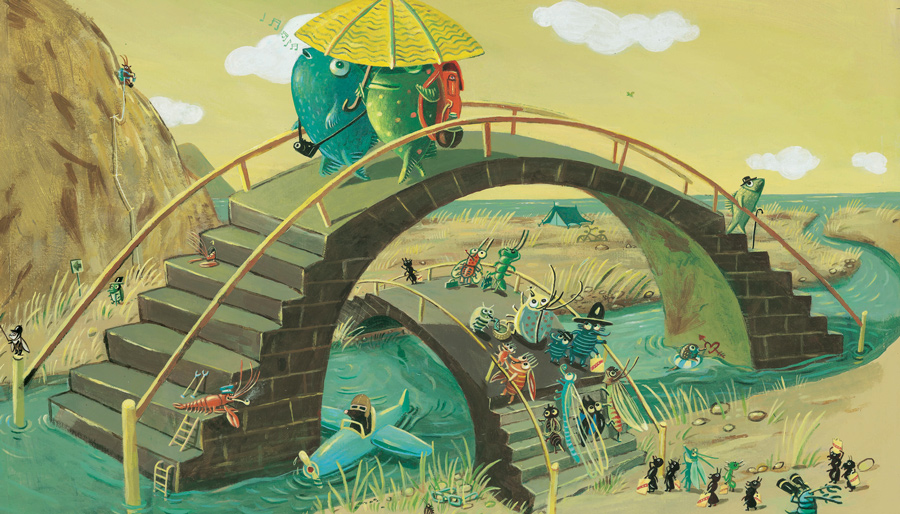 I love how this image recalls the Polish illustrator Szancer (see the top image here)
I love how this image recalls the Polish illustrator Szancer (see the top image here) detail
detail
 detail
detail
 detail
detail detail
Follow Enchanted Lion Books on Facebook
detail
Follow Enchanted Lion Books on Facebook
 Salzweld
Salzweld Bales
Bales Kalynovich
Kalynovich

 Josef Vachal
Josef Vachal Josef Liesler
Josef Liesler Josef Liesler
Josef Liesler

 Werner
Werner R. Koch
R. Koch Blossfeld
Blossfeld detail
detail Blossfeld
Blossfeld Blossfeld
See all bookplate posts on 50 Watts.
Blossfeld
See all bookplate posts on 50 Watts.
 1925-1926, illus. Willem Papenhuyzen via Memory of the Netherlands
1925-1926, illus. Willem Papenhuyzen via Memory of the Netherlands 1925-1949, poster by Evert Möllenkamp via Memory of the Netherlands
1925-1949, poster by Evert Möllenkamp via Memory of the Netherlands
 1925-1949, poster by W. J. v.d. Werf via Memory of the Netherlands
1925-1949, poster by W. J. v.d. Werf via Memory of the Netherlands 1926-1927, poster by Albert Hahn via Memory of the Netherlands
1926-1927, poster by Albert Hahn via Memory of the Netherlands 1927-1928, poster by Albert Hahn via Memory of the Netherlands
1927-1928, poster by Albert Hahn via Memory of the Netherlands 1939, poster by E. Lukàcs via Memory of the Netherlands
1939, poster by E. Lukàcs via Memory of the Netherlands
 1939, poster by Gé Hurkmans via Memory of the Netherlands
1939, poster by Gé Hurkmans via Memory of the Netherlands
 1940, poster by Drik de Leeuw via Memory of the Netherlands
1940, poster by Drik de Leeuw via Memory of the Netherlands 1942, poster by Hans Bolleman via Memory of the Netherlands
1942, poster by Hans Bolleman via Memory of the Netherlands 1942, poster by Hans Bolleman via Memory of the Netherlands
1942, poster by Hans Bolleman via Memory of the Netherlands c. 1950–1959, designer unknown, via Memory of the Netherlands
c. 1950–1959, designer unknown, via Memory of the Netherlands
 1950-1970, poster by V. Riel via Memory of the Netherlands
1950-1970, poster by V. Riel via Memory of the Netherlands 1950, poster by N. Olthuis via Memory of the Netherlands
1950, poster by N. Olthuis via Memory of the Netherlands 1952-1953, poster by Dick Harders via Memory of the Netherlands
1952-1953, poster by Dick Harders via Memory of the Netherlands 1959-1964, designer unknown, via Memory of the Netherlands
1959-1964, designer unknown, via Memory of the Netherlands 1959-1964, designer unknown, via Memory of the Netherlands
1959-1964, designer unknown, via Memory of the Netherlands 1959-1964, designer unknown, via Memory of the Netherlands
1959-1964, designer unknown, via Memory of the Netherlands 1959, poster by T.T. Kwee via Memory of the Netherlands
1959, poster by T.T. Kwee via Memory of the Netherlands 1960-1970, poster by Frits Frietman via Memory of the Netherlands
1960-1970, poster by Frits Frietman via Memory of the Netherlands 1960, designer unknown, via Memory of the Netherlands
1960, designer unknown, via Memory of the Netherlands 1967, designer unknown, via Memory of the Netherlands
1967, designer unknown, via Memory of the Netherlands 1968, designer unknown, via Memory of the Netherlands
1968, designer unknown, via Memory of the Netherlands 1972, designer unknown, via Memory of the Netherlands
1972, designer unknown, via Memory of the Netherlands 1972, designer unknown, via Memory of the Netherlands
1972, designer unknown, via Memory of the Netherlands 1973, poster by Frans Mettes via Memory of the Netherlands
1973, poster by Frans Mettes via Memory of the Netherlands 1973, poster by Frans Mettes via Memory of the Netherlands
1973, poster by Frans Mettes via Memory of the Netherlands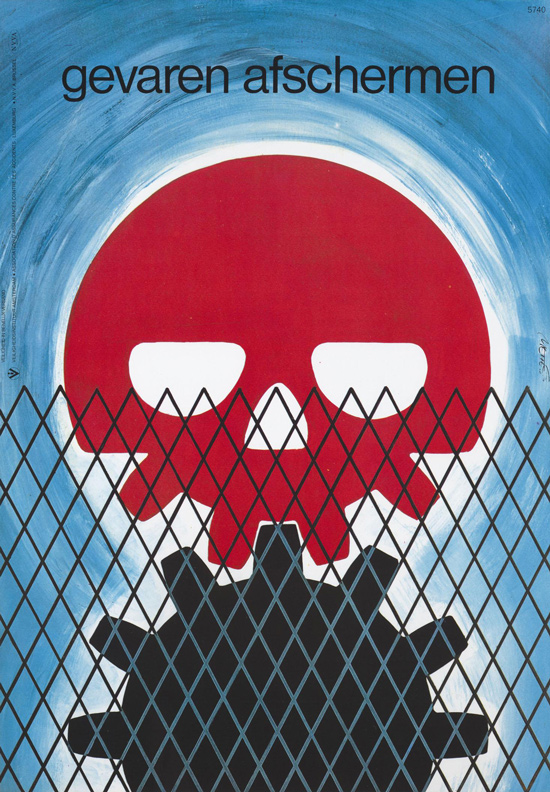 1975, poster by Frans Mettes via Memory of the Netherlands
1975, poster by Frans Mettes via Memory of the Netherlands 1977, poster by Ron van Weerdt via Memory of the Netherlands
This one would look good in a CRM textbook
Previously: Don't fall off the building and Danger Is Everywhere
1977, poster by Ron van Weerdt via Memory of the Netherlands
This one would look good in a CRM textbook
Previously: Don't fall off the building and Danger Is Everywhere
 Eric Lambé is a pioneering figure in the modern Franco-Belgian movement towards a more poetic expression of the comics form, drawing from broader traditions of drawing, painting and printmaking. Active since the 1990s, Lambé has produced a number of books, both alone and in collaboration, for publishers large and small. His masterpiece Le Fils du Roi (“The King’s Son”) was published by Frémok last year. The book refers to pieces by Balthus, Picasso, and other high art touchstones, but their inclusion here seems to be as personal to Lambé as the highly specific objects, gestures and dreamlike images that constitute this jaw-dropping and mesmerizing work. The original artwork for this book was exhibited at Paris’s Galerie Martel this past winter, and Lambé will make a rare North American tour this spring. Lambé will appear at the following events, where copies of the book will also be available:
Friday, May 3: Eric Lambé in conversation with Bart Beaty at the Center for Book Arts, New York City
Sunday, May 5: SUNY Purchase Zinefeast, Purchase, NY
Monday, May 6: The New York Comics & Picture-Story Symposium, New York City
Saturday and Sunday, May 11-12: TCAF: The Toronto Comic Arts Festival, Toronto, Ontario, Canada
Eric Lambé is a pioneering figure in the modern Franco-Belgian movement towards a more poetic expression of the comics form, drawing from broader traditions of drawing, painting and printmaking. Active since the 1990s, Lambé has produced a number of books, both alone and in collaboration, for publishers large and small. His masterpiece Le Fils du Roi (“The King’s Son”) was published by Frémok last year. The book refers to pieces by Balthus, Picasso, and other high art touchstones, but their inclusion here seems to be as personal to Lambé as the highly specific objects, gestures and dreamlike images that constitute this jaw-dropping and mesmerizing work. The original artwork for this book was exhibited at Paris’s Galerie Martel this past winter, and Lambé will make a rare North American tour this spring. Lambé will appear at the following events, where copies of the book will also be available:
Friday, May 3: Eric Lambé in conversation with Bart Beaty at the Center for Book Arts, New York City
Sunday, May 5: SUNY Purchase Zinefeast, Purchase, NY
Monday, May 6: The New York Comics & Picture-Story Symposium, New York City
Saturday and Sunday, May 11-12: TCAF: The Toronto Comic Arts Festival, Toronto, Ontario, Canada




 Images from Joue Avec Moi (Frémok, 2011):
Images from Joue Avec Moi (Frémok, 2011):

 Bill Kartalopoulos is a Brooklyn-based comics educator, curator and critic. He is a co-founder of the Brooklyn Comics and Graphics Festival, the publisher of Rebus Books, and the Series Editor for the Best American Comics from Houghton Mifflin Harcourt beginning with the 2014 volume.
Bill Kartalopoulos is a Brooklyn-based comics educator, curator and critic. He is a co-founder of the Brooklyn Comics and Graphics Festival, the publisher of Rebus Books, and the Series Editor for the Best American Comics from Houghton Mifflin Harcourt beginning with the 2014 volume.
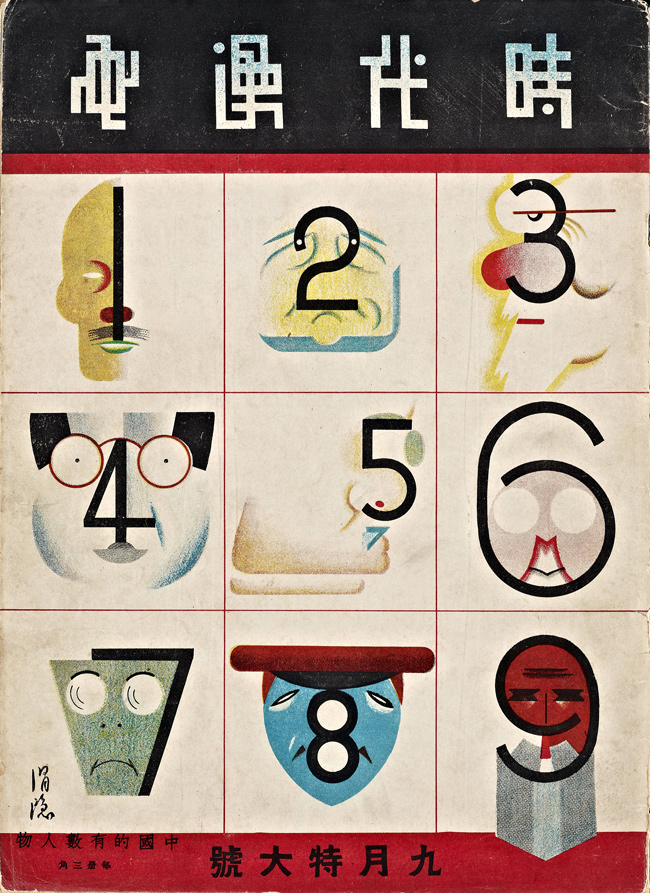 Modern Sketch issue #9
Chen Juanyin, “China’s Characters Who Count” (#1, Chiang Kai-shek...)
For the full background on this remarkable publication read John A Crespi's essay "China's Modern Sketch: The Golden Era of Cartoon Art, 1934-1937" at MIT Visualizing Cultures. Every issue can be seen in high resolution at Colgate Digital Collections -- they made the scans.
From MIT Visualizing Cultures: Modern Sketch stands out among the nearly 20 illustrated humor and satire magazines that proliferated in mid-1930s Shanghai. One can point to the remarkable openness and eclecticism of its content, and its inclusion of work by young artists who went on to become leaders in China’s 20th-century cultural establishment. Most intriguing, however, is the kaleidoscopic window onto the past that Modern Sketch provides. Without doubt the illustrations populating its pages lend blunt visual force to the major crises and contradictions that define China’s 20th century as a quintessentially modern era.
I included artist's names and translations when possible.
Modern Sketch issue #9
Chen Juanyin, “China’s Characters Who Count” (#1, Chiang Kai-shek...)
For the full background on this remarkable publication read John A Crespi's essay "China's Modern Sketch: The Golden Era of Cartoon Art, 1934-1937" at MIT Visualizing Cultures. Every issue can be seen in high resolution at Colgate Digital Collections -- they made the scans.
From MIT Visualizing Cultures: Modern Sketch stands out among the nearly 20 illustrated humor and satire magazines that proliferated in mid-1930s Shanghai. One can point to the remarkable openness and eclecticism of its content, and its inclusion of work by young artists who went on to become leaders in China’s 20th-century cultural establishment. Most intriguing, however, is the kaleidoscopic window onto the past that Modern Sketch provides. Without doubt the illustrations populating its pages lend blunt visual force to the major crises and contradictions that define China’s 20th century as a quintessentially modern era.
I included artist's names and translations when possible.
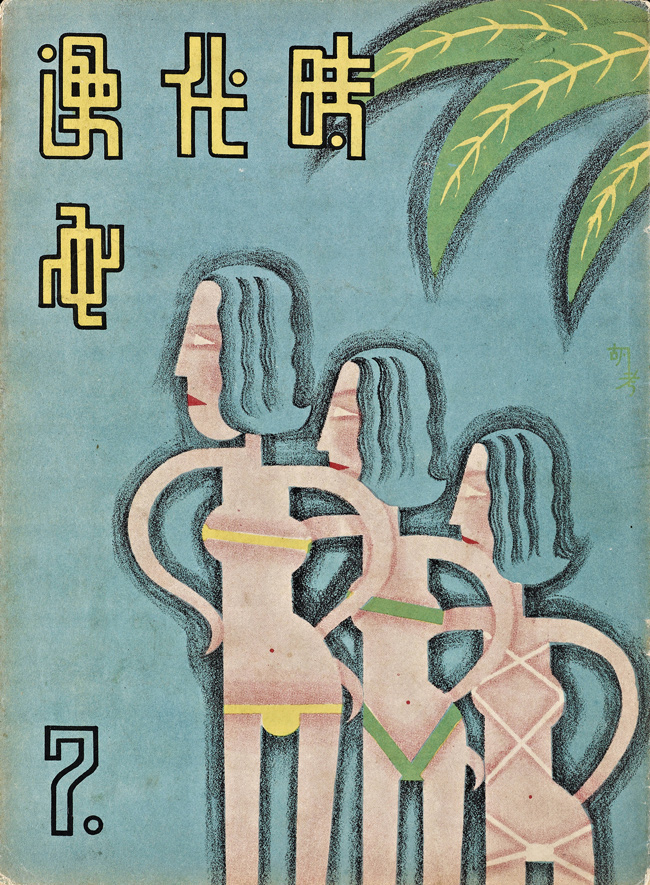 Hu Kao, “Swimsuits of 1934” (issue 7, July 1934)Crespi: "Designed to define Modern Sketch in the eyes of readers, the magazine’s full-color front covers offer a convenient point of entry into its diverse subjects and styles. What strikes the viewer’s eye now, as it surely did in the 1930s, is a consistent theme of eroticism. Nude or semi-nude figures were undoubtedly displayed to titillate the potential buyer. Yet during the first decades of the Republican period nudity could also project positive symbolic values, such as freedom, liberation, and physical health—all tropes aimed at counteracting representations of China as the tradition-bound, feeble, 'Sick Man of Asia.'"
Hu Kao, “Swimsuits of 1934” (issue 7, July 1934)Crespi: "Designed to define Modern Sketch in the eyes of readers, the magazine’s full-color front covers offer a convenient point of entry into its diverse subjects and styles. What strikes the viewer’s eye now, as it surely did in the 1930s, is a consistent theme of eroticism. Nude or semi-nude figures were undoubtedly displayed to titillate the potential buyer. Yet during the first decades of the Republican period nudity could also project positive symbolic values, such as freedom, liberation, and physical health—all tropes aimed at counteracting representations of China as the tradition-bound, feeble, 'Sick Man of Asia.'"
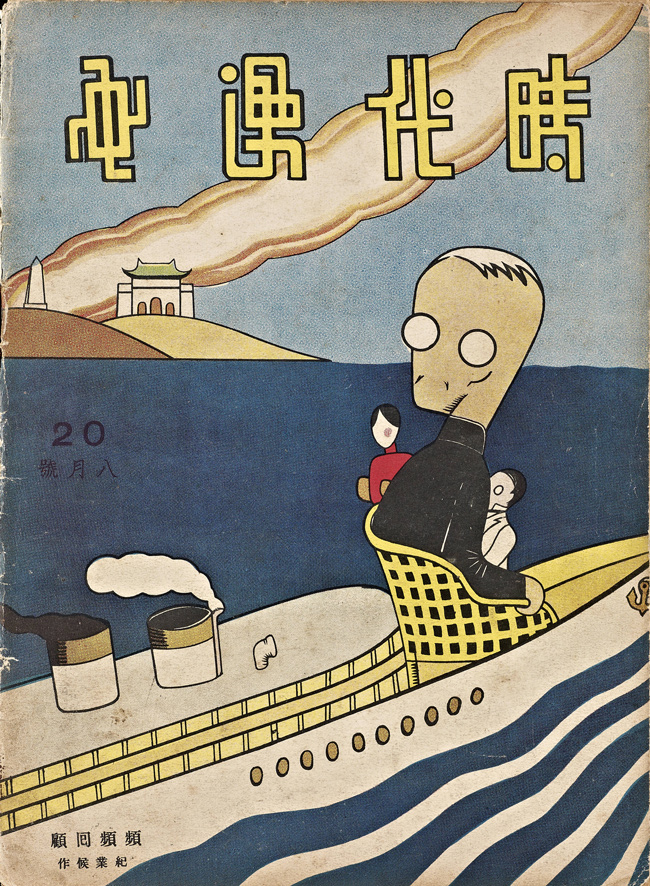
 Sheng Gongmu (Te Wei), “The Borderlands”Crespi: "Many streams of artistic influence fed the imagery of Modern Sketch. Where representations of the 'modern girl' and 'modern boy' drew mainly from stylish American jazz-age magazine illustration, other cartoonists picked and chose from among modern-art movements like cubism, surrealism, fauvism, and dada. Few rules applied to the young, almost totally uninstitutionalized art of Chinese cartooning, and the results could be fascinatingly grotesque."
Sheng Gongmu (Te Wei), “The Borderlands”Crespi: "Many streams of artistic influence fed the imagery of Modern Sketch. Where representations of the 'modern girl' and 'modern boy' drew mainly from stylish American jazz-age magazine illustration, other cartoonists picked and chose from among modern-art movements like cubism, surrealism, fauvism, and dada. Few rules applied to the young, almost totally uninstitutionalized art of Chinese cartooning, and the results could be fascinatingly grotesque."
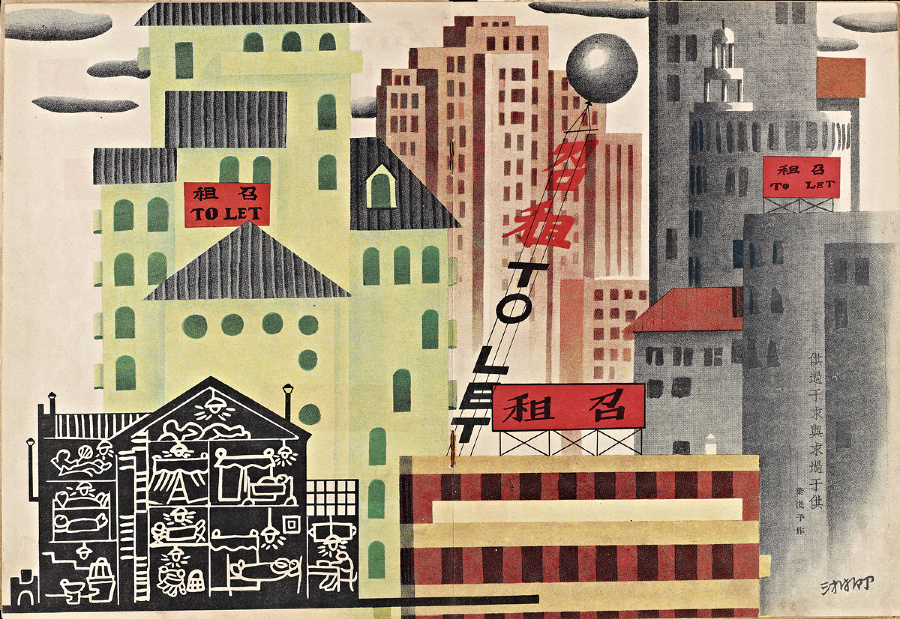 Ye Qianyu, “Supply Exceeds Demand, Demand Exceeds Supply”
Some of these can be viewed larger by clicking:
Fullscreen
Ye Qianyu, “Supply Exceeds Demand, Demand Exceeds Supply”
Some of these can be viewed larger by clicking:
Fullscreen
 Yan Zhexi, “Nothing of the Sort!”
Yan Zhexi, “Nothing of the Sort!”

 Weng Xingqing, “A World of Lines”
Weng Xingqing, “A World of Lines”
 Shang Ban Yu, “Bacteria from the ‘Sick Man of Asia’ at 2000x Magnification”
Shang Ban Yu, “Bacteria from the ‘Sick Man of Asia’ at 2000x Magnification”
 “Lineup of the World’s Dictators: Saint Fascista and His Disciples”Crespi: "...Modern Sketch did much more than react to big national and global events. Due to the vision of its editor, Lu Shaofei, the collective pictorial imagination of Modern Sketch probed all corners of the modern era, beyond and below the big stories of politics, economics, Shanghai, and even China."
“Lineup of the World’s Dictators: Saint Fascista and His Disciples”Crespi: "...Modern Sketch did much more than react to big national and global events. Due to the vision of its editor, Lu Shaofei, the collective pictorial imagination of Modern Sketch probed all corners of the modern era, beyond and below the big stories of politics, economics, Shanghai, and even China."
 Hu Kao, “The Perfect Life of Leisure!” (clockwise from top left)
— Ain’t no time for learning in the gusty old fall,
Woo woo...chee chee...a shoo shoo shoo...
— Ain’t no time for books in the warm and breezy spring,
Pa pa...doo doo...a go go go
— Ain’t no time for homework in the scorching summer,
Wah wah...lah lah...a yeah yeah yeah
— Ain’t no time to study on those chilly winter nights,
Dah dah...bom bom...a lah lah lah...
Hu Kao, “The Perfect Life of Leisure!” (clockwise from top left)
— Ain’t no time for learning in the gusty old fall,
Woo woo...chee chee...a shoo shoo shoo...
— Ain’t no time for books in the warm and breezy spring,
Pa pa...doo doo...a go go go
— Ain’t no time for homework in the scorching summer,
Wah wah...lah lah...a yeah yeah yeah
— Ain’t no time to study on those chilly winter nights,
Dah dah...bom bom...a lah lah lah...
 Huang Weiqiang, “The Internationalized Hong Kong Meat Market”
Huang Weiqiang, “The Internationalized Hong Kong Meat Market”
 Chinese opera character drawn by a child (Chen Keyan) for this 1935 cover
Chinese opera character drawn by a child (Chen Keyan) for this 1935 cover cover by Huang Yao featuring his signature character
cover by Huang Yao featuring his signature character
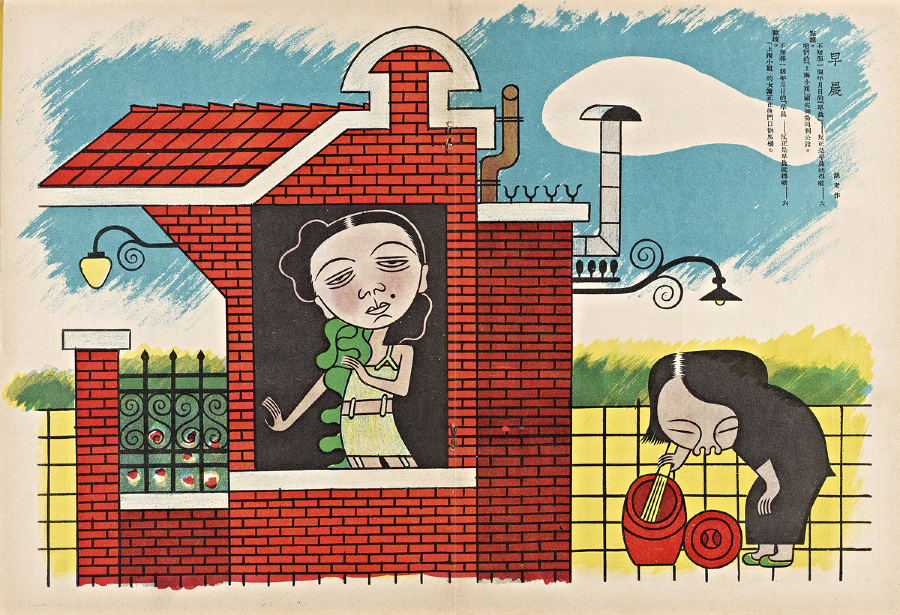
 Crespi: "Zhang Guangyu’s cheerful January 1935 contribution commemorated the Republican government’s Year of Children..."
Crespi: "Zhang Guangyu’s cheerful January 1935 contribution commemorated the Republican government’s Year of Children..."
 Pang Xunqin, “Aquatic Life”
Pang Xunqin, “Aquatic Life”



 "World Peace News Service: 'Portrait of the Chief of the Economic Survey Team,
Kodama Kenji, during His Visit to China'”
"World Peace News Service: 'Portrait of the Chief of the Economic Survey Team,
Kodama Kenji, during His Visit to China'”
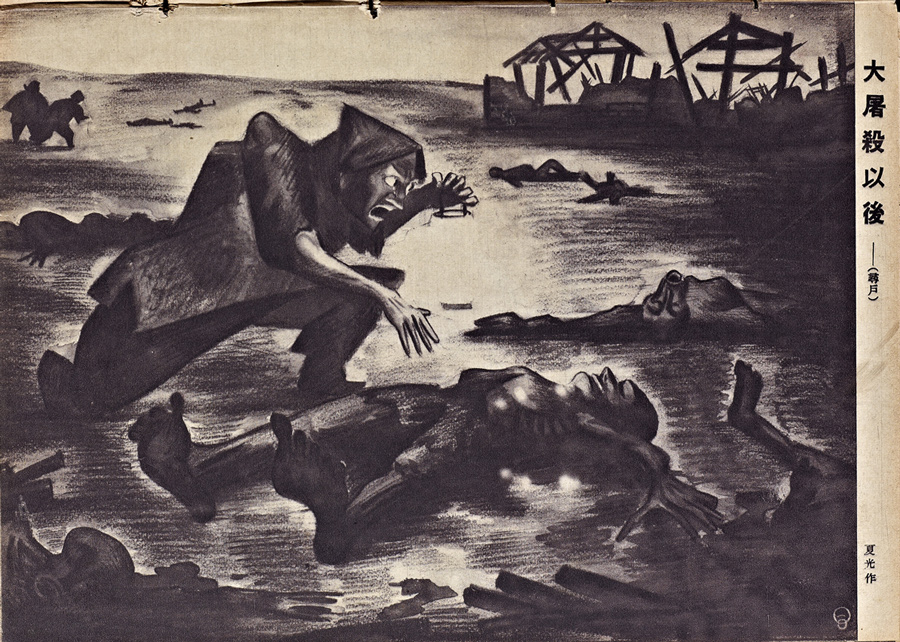
 Chen Paixi, “Official Malfeasance among the Cantonese Gentry”
Chen Paixi, “Official Malfeasance among the Cantonese Gentry”
 “Compassion for the World”
[The Pope:] The Lord Shall Provide
“Compassion for the World”
[The Pope:] The Lord Shall Provide
 Ye Qianyu, “The Second-class Rail Carriage”
Many of the illustrations have a strong Grosz influence
Ye Qianyu, “The Second-class Rail Carriage”
Many of the illustrations have a strong Grosz influence
 Ye Qianyu, cover of the second issue
Ye Qianyu, cover of the second issue Yu Yongpeng, “Competing Vehicles”
Yu Yongpeng, “Competing Vehicles”
 Yu Yongpeng, “Repairing a Rich Man’s Head”
Instructions: The face is painted green to facilitate malingering. The scalp is lubricated to slip out of tight situations. The eyes are different colors for sizing up different sorts of characters. The ears are nailed shut to help shirk responsibility. The teeth are sharp and the tongue coated with honey as an aid to persuasion. But little does the rich man know how the small-timers leech off of him!
Yu Yongpeng, “Repairing a Rich Man’s Head”
Instructions: The face is painted green to facilitate malingering. The scalp is lubricated to slip out of tight situations. The eyes are different colors for sizing up different sorts of characters. The ears are nailed shut to help shirk responsibility. The teeth are sharp and the tongue coated with honey as an aid to persuasion. But little does the rich man know how the small-timers leech off of him!
 Cover of the first issueCrespi: "Equal parts comic and gallant, this strange horseman heralded the arrival of the longest running and most influential humor and satire magazine in China during the first half of the 20th century: Shidai manhua, or by its English name, Modern Sketch. Published monthly for 39 issues from 1934 through June 1937, Modern Sketch was recognized then, and still is now, as the centerpiece of China’s golden era of cartoon art."
A sequel to this post is in the works.
See all posts tagged "China"
Cover of the first issueCrespi: "Equal parts comic and gallant, this strange horseman heralded the arrival of the longest running and most influential humor and satire magazine in China during the first half of the 20th century: Shidai manhua, or by its English name, Modern Sketch. Published monthly for 39 issues from 1934 through June 1937, Modern Sketch was recognized then, and still is now, as the centerpiece of China’s golden era of cartoon art."
A sequel to this post is in the works.
See all posts tagged "China"
 1909
Li-An has been posting a ton of material from Die Muskete on his tumblr. As I work my own way through the complete archive at Österreichische Nationalbibliothek, Franz Wacik's strange out-of-time work keeps catching my eye. Apparently he published 600 drawings in the magazine from 1906 to 1919. (I've made it through mid-1911 and have hoarded a couple hundred.)
Information about Wacik (Vienna, 1883–1938) is scant, so luckily Barbara Copeland Buenger discusses him in her essay "Unwieldy Wien" (from Design, Vienna: 1890s to 1930s):As one of the group's greatest founders and practitioners, [Czeschka] has always received central notice in histories of modern Viennese art and design. Such is not true of Franz Wacik, widely admired as a political and social cartoonist for a popular Viennese humorous weekly, occasional theater designer, and illustrator of children's books (he designed three volumes in the Gerlach series). Wacik is all but forgotten in texts that present the Wiener Werkstätte as Vienna's only modern art movement and thus reminds us that a richer, more complicated history of modern art often falls outside a too-strictly-construed modernist canon. Wacik was a regular member and exhibitor with the Secession, and illustrated Hugo von Hofmannsthal's famous wartime children's book, Prinz Eugen der edle Ritter [Prince Eugene the Nobel Knight] in 1915. [Ed.: See my scan at the bottom of this post.]
Another short bio at Kunsthandel Hieke:[Wacik] studied at the Vienna School of Arts and Crafts and at the Vienna Academy. [Ed.: he studied with Alfred Roller, Christian Griepenkerl, Franz Rumpler, and Heinrich Lefler.] From 1906 to 1919, he worked for the magazine “Muskete” -- 600 of his drawings are from this period. In 1924, he designed the frescoes on the first floor of the Vienna Secession, and in 1927/8 the frescoes in the arcades of the municipal building on Vogelweidplatz...For his work, he was awarded the Lampi Prize and the Füger Medal as well as the State Prize in 1934. The Vienna Secession held a memorial exhibition in 1939.
Buenger mentions "the artist Marianne Wacik, Franz Wacik's wife" — I haven't yet looked her up.
Anyway, ENJOY. At the end of the post I provide some non-Muskete work.
1909
Li-An has been posting a ton of material from Die Muskete on his tumblr. As I work my own way through the complete archive at Österreichische Nationalbibliothek, Franz Wacik's strange out-of-time work keeps catching my eye. Apparently he published 600 drawings in the magazine from 1906 to 1919. (I've made it through mid-1911 and have hoarded a couple hundred.)
Information about Wacik (Vienna, 1883–1938) is scant, so luckily Barbara Copeland Buenger discusses him in her essay "Unwieldy Wien" (from Design, Vienna: 1890s to 1930s):As one of the group's greatest founders and practitioners, [Czeschka] has always received central notice in histories of modern Viennese art and design. Such is not true of Franz Wacik, widely admired as a political and social cartoonist for a popular Viennese humorous weekly, occasional theater designer, and illustrator of children's books (he designed three volumes in the Gerlach series). Wacik is all but forgotten in texts that present the Wiener Werkstätte as Vienna's only modern art movement and thus reminds us that a richer, more complicated history of modern art often falls outside a too-strictly-construed modernist canon. Wacik was a regular member and exhibitor with the Secession, and illustrated Hugo von Hofmannsthal's famous wartime children's book, Prinz Eugen der edle Ritter [Prince Eugene the Nobel Knight] in 1915. [Ed.: See my scan at the bottom of this post.]
Another short bio at Kunsthandel Hieke:[Wacik] studied at the Vienna School of Arts and Crafts and at the Vienna Academy. [Ed.: he studied with Alfred Roller, Christian Griepenkerl, Franz Rumpler, and Heinrich Lefler.] From 1906 to 1919, he worked for the magazine “Muskete” -- 600 of his drawings are from this period. In 1924, he designed the frescoes on the first floor of the Vienna Secession, and in 1927/8 the frescoes in the arcades of the municipal building on Vogelweidplatz...For his work, he was awarded the Lampi Prize and the Füger Medal as well as the State Prize in 1934. The Vienna Secession held a memorial exhibition in 1939.
Buenger mentions "the artist Marianne Wacik, Franz Wacik's wife" — I haven't yet looked her up.
Anyway, ENJOY. At the end of the post I provide some non-Muskete work.
 1906
1906 1909 (is that Jeeves?)
1909 (is that Jeeves?) 1906
1906 1910
1910 1907
1907 1906
1906 1907
1907 1909
1909
 1908
1908 1907
1907 1906 (this one's all about the cat)
1906 (this one's all about the cat) 1906
1906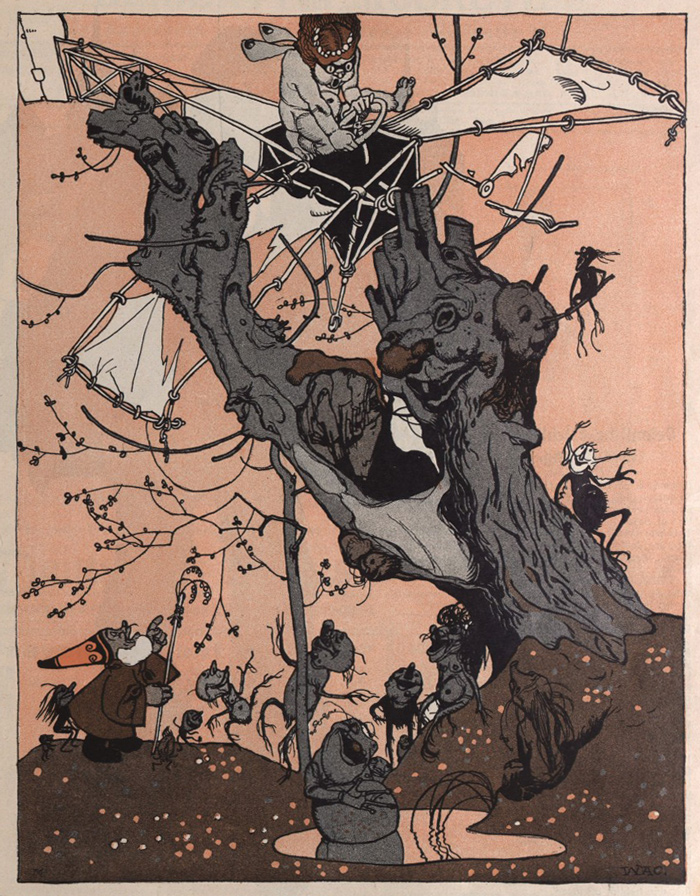 1910
1910 1907
1907 1907
1907 1907
1907 1910
1910 1911
Non-Muskete work:
1911
Non-Muskete work:
 Illus. for Hugo von Hofmannsthal's wartime children's book, Prinz Eugen der edle Ritter (1915)
Illus. for Hugo von Hofmannsthal's wartime children's book, Prinz Eugen der edle Ritter (1915) "The Midnight Feast"
via John Coulthart's 2009 post on feuilleton
"The Midnight Feast"
via John Coulthart's 2009 post on feuilleton 1912 poster by Franz Wacik via The Vienna Secession site
Also see: Twenty Postcards of the Wiener Werkstätte and Der Orchideengarten
1912 poster by Franz Wacik via The Vienna Secession site
Also see: Twenty Postcards of the Wiener Werkstätte and Der Orchideengarten
 1929 (cover used for both "Little Lord Fauntleroy" and "Marshal Togo and General Nogi")
I stumbled upon this book series while rooting around again in the massive NDL. I featured a handful of these covers back in 2009 in some posts of Japanese book covers, though at the time I knew nothing about them (not that I know much more now). I also featured Takeo Takei's illustrations for the H. C. Andersen volume.
I think the series ran to 80+ books—the NDL has digitized 37 volumes published between 1927 and 1929. The books covered many topics—Western classics, Japanese history, fairy tales, science, religion—as you'll see from the rough Google translations given below each image. Many volumes were edited, translated, or written by Kan Kikuchi (菊池 寛).
It's hard to determine the illustrators and designers responsible for most of these. (One problem is that often different artists are responsible for the covers and interior illustrations, but the NDL usually catalogs only the interior illustrator. Another is that I don't read Japanese!)
If you like this post, don't miss the "Takeo Takei" filter.
1929 (cover used for both "Little Lord Fauntleroy" and "Marshal Togo and General Nogi")
I stumbled upon this book series while rooting around again in the massive NDL. I featured a handful of these covers back in 2009 in some posts of Japanese book covers, though at the time I knew nothing about them (not that I know much more now). I also featured Takeo Takei's illustrations for the H. C. Andersen volume.
I think the series ran to 80+ books—the NDL has digitized 37 volumes published between 1927 and 1929. The books covered many topics—Western classics, Japanese history, fairy tales, science, religion—as you'll see from the rough Google translations given below each image. Many volumes were edited, translated, or written by Kan Kikuchi (菊池 寛).
It's hard to determine the illustrators and designers responsible for most of these. (One problem is that often different artists are responsible for the covers and interior illustrations, but the NDL usually catalogs only the interior illustrator. Another is that I don't read Japanese!)
If you like this post, don't miss the "Takeo Takei" filter.
 1929, "Story of Astronomy and Minerals"
1929, "Story of Astronomy and Minerals"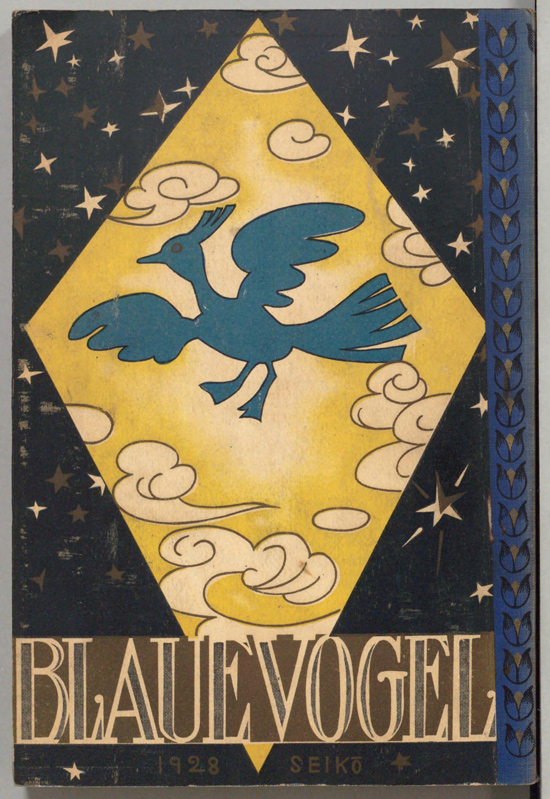 1928, illustration by Seiko for The Blue Bird
1928, illustration by Seiko for The Blue Bird 1927, Alice in Wonderland (appears to have been translated by the mighty Akutagawa)
1927, Alice in Wonderland (appears to have been translated by the mighty Akutagawa)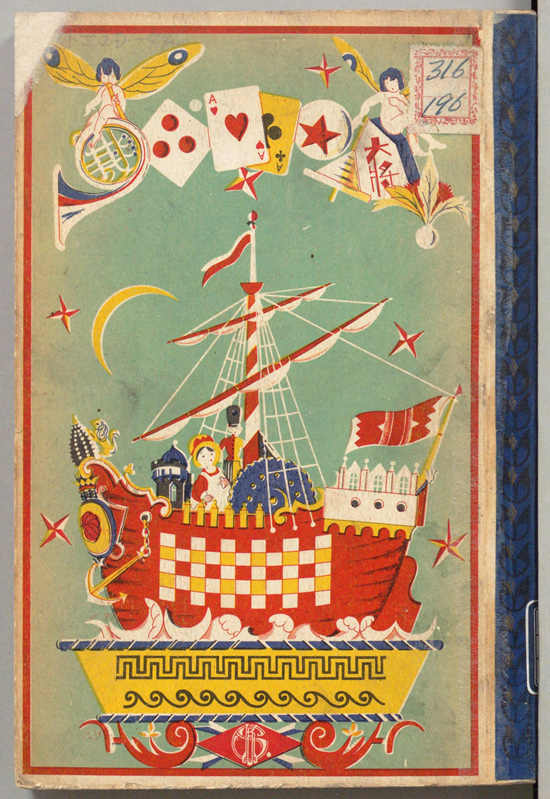 1927, "Interesting Library"
1927, "Interesting Library"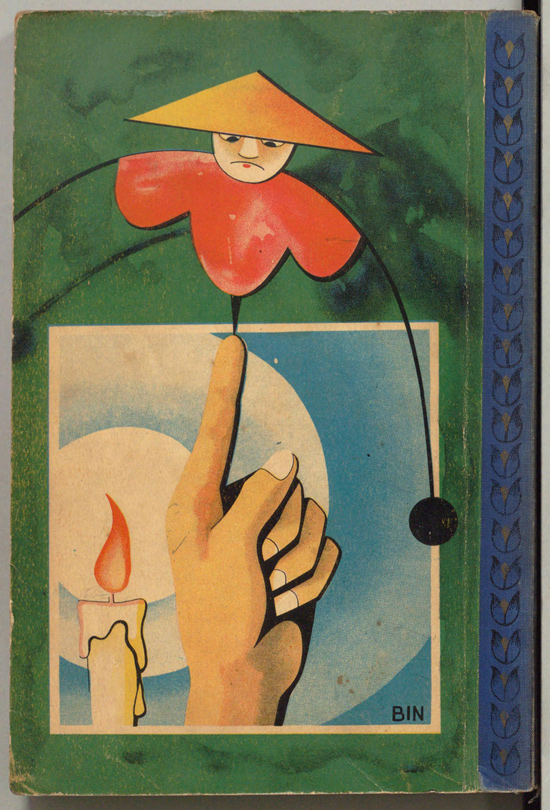 1928, "Physical Chemistry," illustration signed "BIN"
1928, "Physical Chemistry," illustration signed "BIN" 1928, "Children's Industrial Story"
1928, "Children's Industrial Story" 1928, "Story of Insects," illus. signed "SA"
1928, "Story of Insects," illus. signed "SA"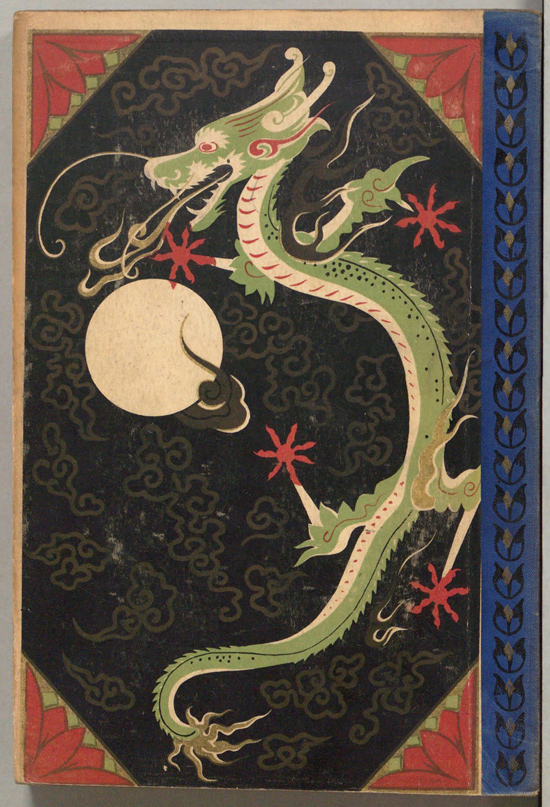 1927, "Meiji Emperor"
1927, "Meiji Emperor"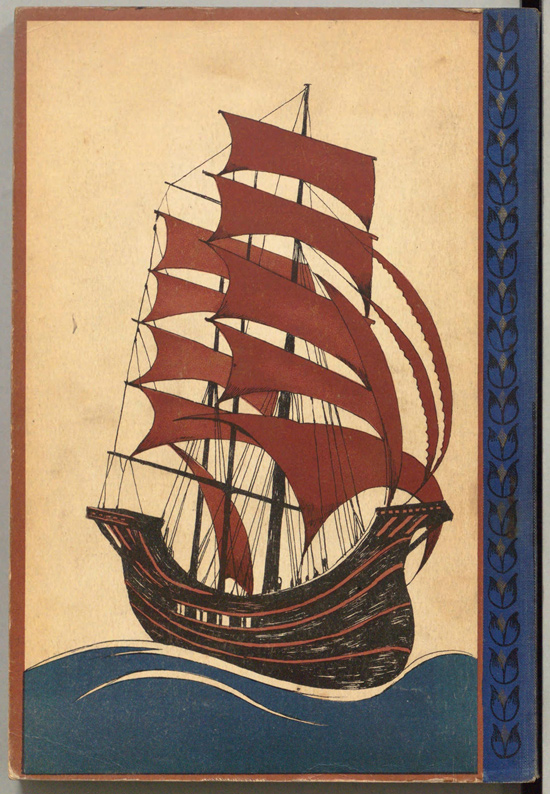 1927, "Robinson Crusoe"
1927, "Robinson Crusoe"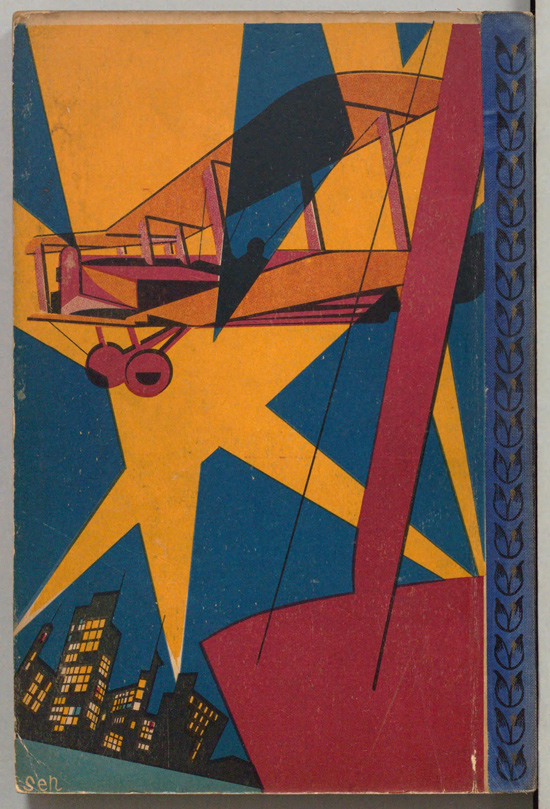 1928, "Story of an Airplane," illus. signed "Sen"
1928, "Story of an Airplane," illus. signed "Sen"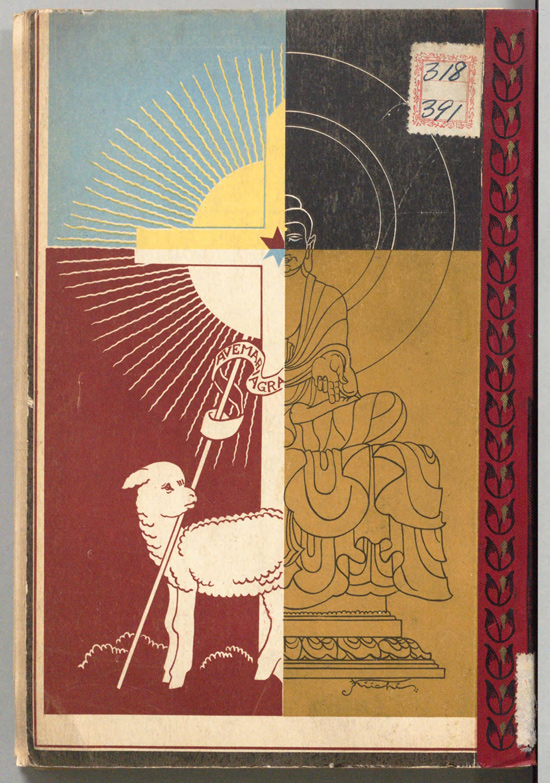 1928, "Religious Fairy Tale Collection"
1928, "Religious Fairy Tale Collection"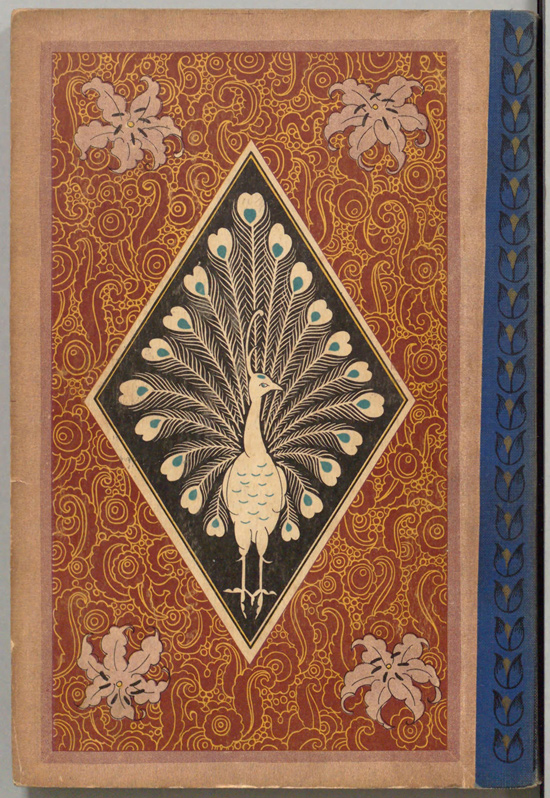 1929, "Animal Botany for Children"
1929, "Animal Botany for Children"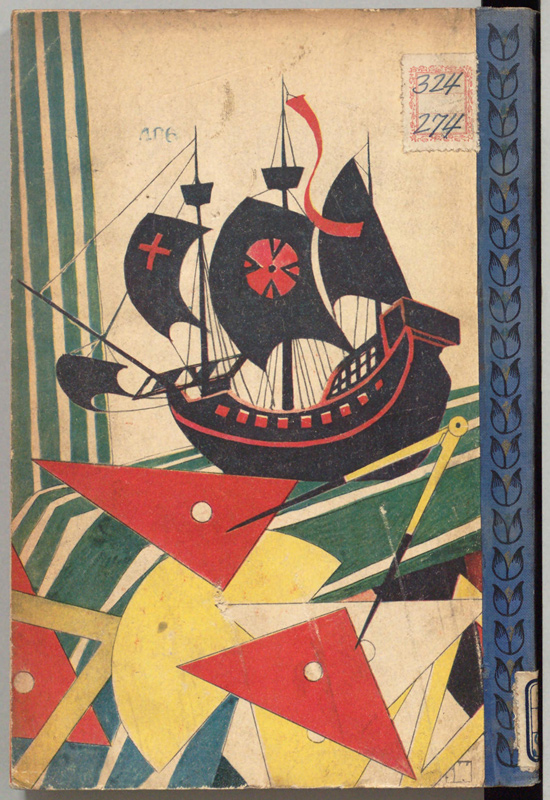 1929, "Engineering for Children"
1929, "Engineering for Children" 1929, "To the mountain to the sea"
1929, "To the mountain to the sea"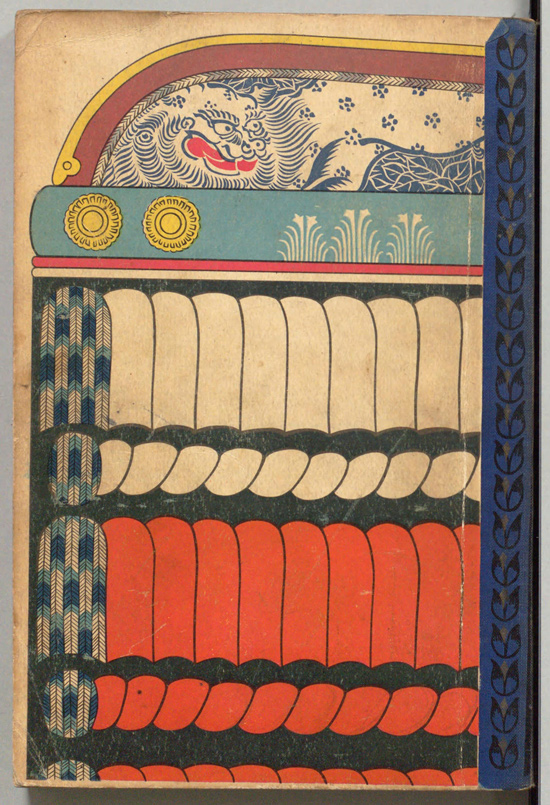 1928, "Japanese Tale of Heroism"
1928, "Japanese Tale of Heroism"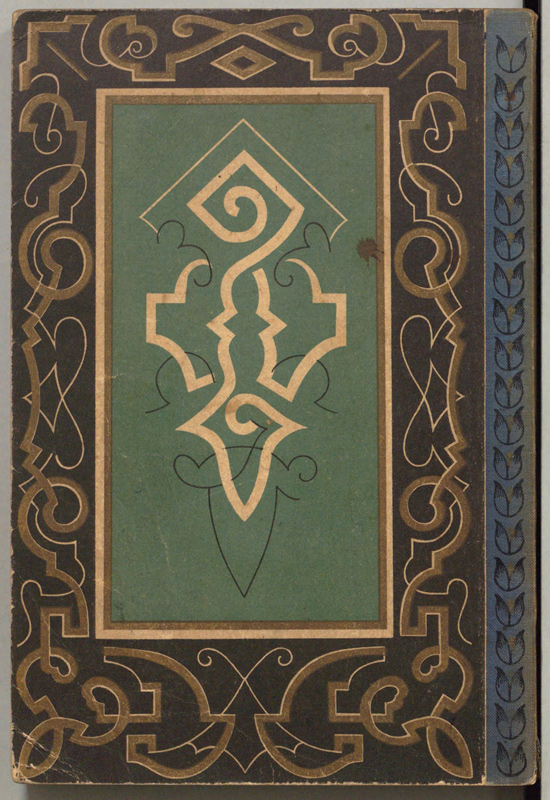 1929, "Boy's Encyclopedia"
1929, "Boy's Encyclopedia" 1929, "Foreign History"
1929, "Foreign History" 1929, "Story of the Army and Land Battles"
1929, "Story of the Army and Land Battles" 1928, "Taiheiki Story"
1928, "Taiheiki Story"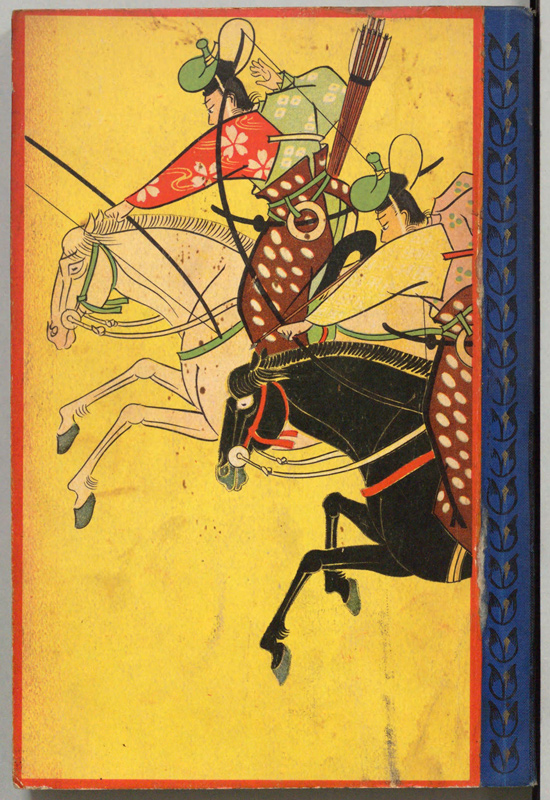 1928, "Chushingura Story, Soga Story"
1928, "Chushingura Story, Soga Story" 1929, "Way to the World"
1929, "Way to the World"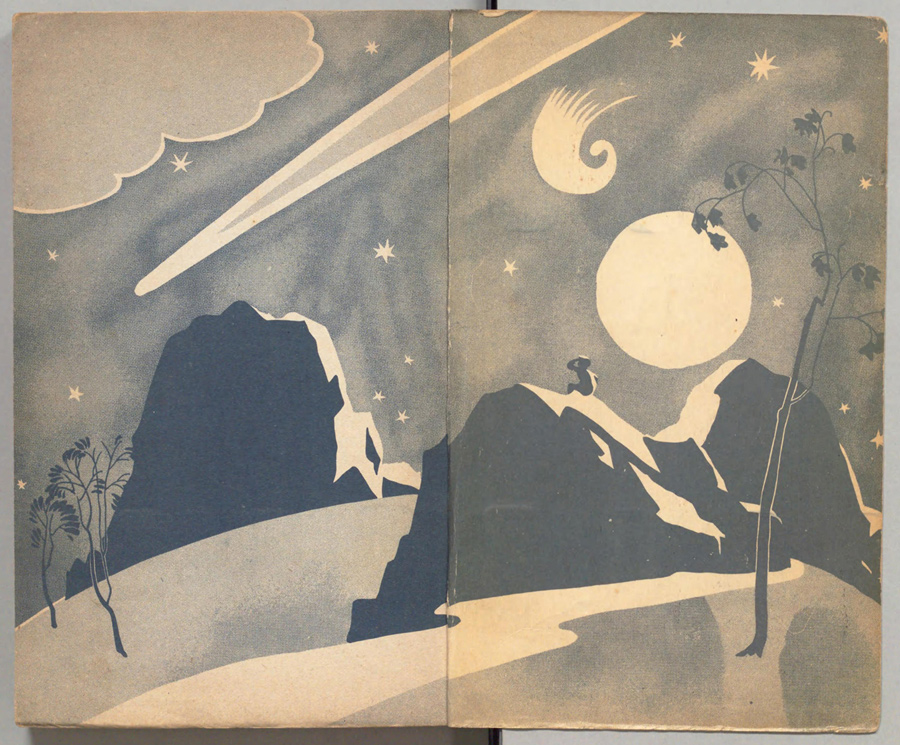 1929, endpapers, "Story of Astronomy and Minerals"
1929, endpapers, "Story of Astronomy and Minerals" 1928, endpapers, "Chushingura Story, Soga Story"
1928, endpapers, "Chushingura Story, Soga Story" 1928, endpapers, "Story of an Airplane"
1928, endpapers, "Story of an Airplane"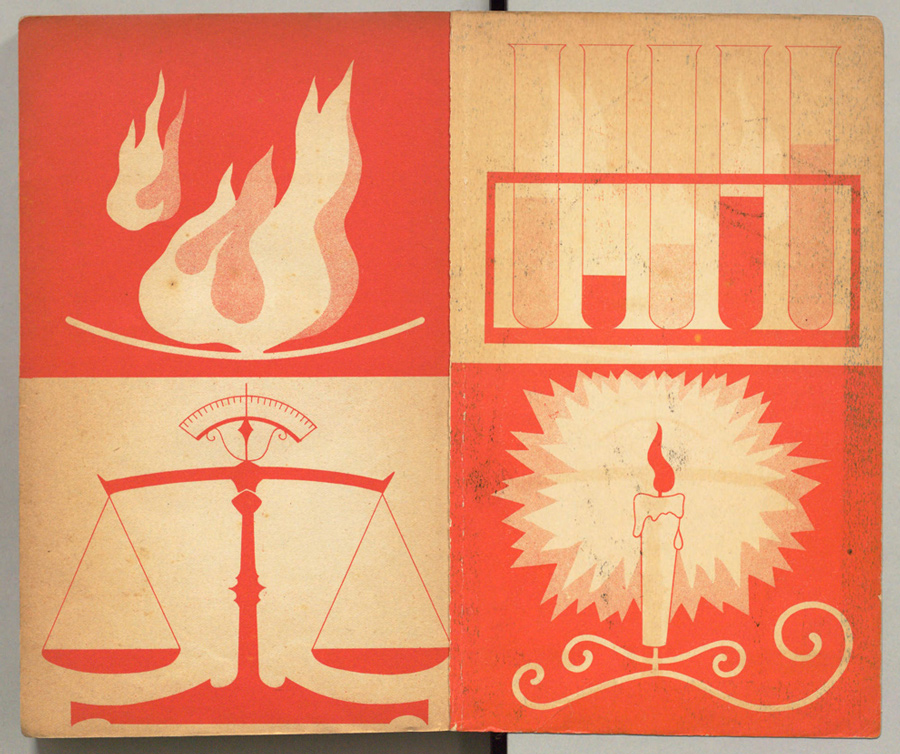 1928, endpapers, "Physical Chemistry"
1928, endpapers, "Physical Chemistry" 1928, endpapers, "Story of Insects"
1928, endpapers, "Story of Insects" 1928, endpapers, "Children's Physiology and Hygiene"
1928, endpapers, "Children's Physiology and Hygiene" 1929, endpapers, "Way to the World"
1929, endpapers, "Way to the World"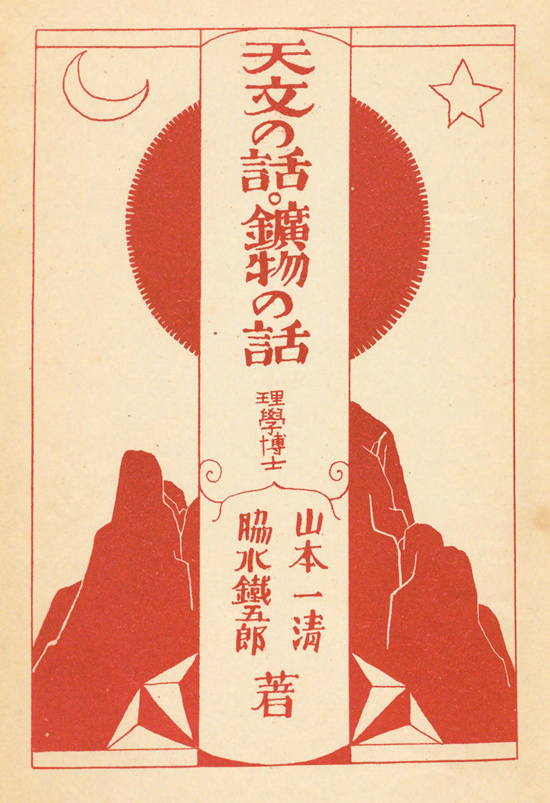 1929, title page, "Story of Astronomy and Minerals"
1929, title page, "Story of Astronomy and Minerals"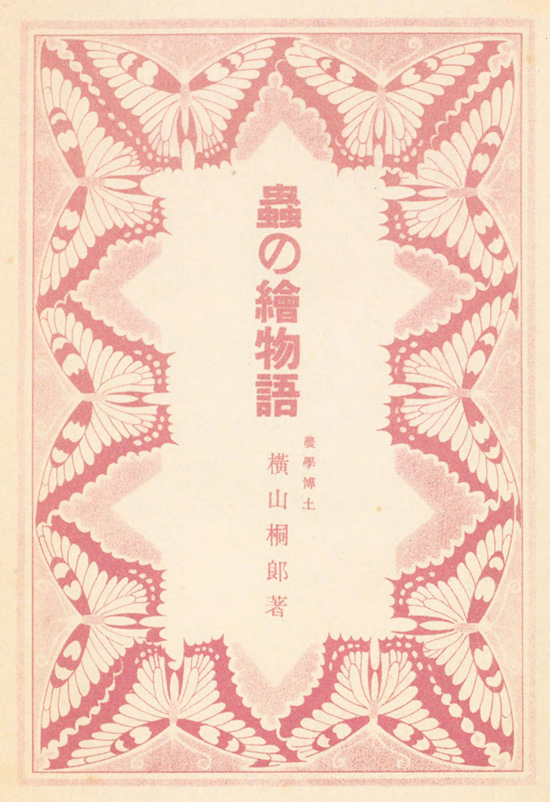 1928, title page, "Story of Insects"
1928, title page, "Story of Insects" 1928, cover by Takeo Takei
I've featured this before but NOW I KNOW IT'S FOR THE JUNGLE BOOK!
Previous posts on Japan
1928, cover by Takeo Takei
I've featured this before but NOW I KNOW IT'S FOR THE JUNGLE BOOK!
Previous posts on Japan